The Place
After years – yes years – of delays, two-Michelin-starred and consistently World's 50 Best ranked restaurant Narisawa from Tokyo finally opened up in Shanghai’s 1000 Trees this past July.
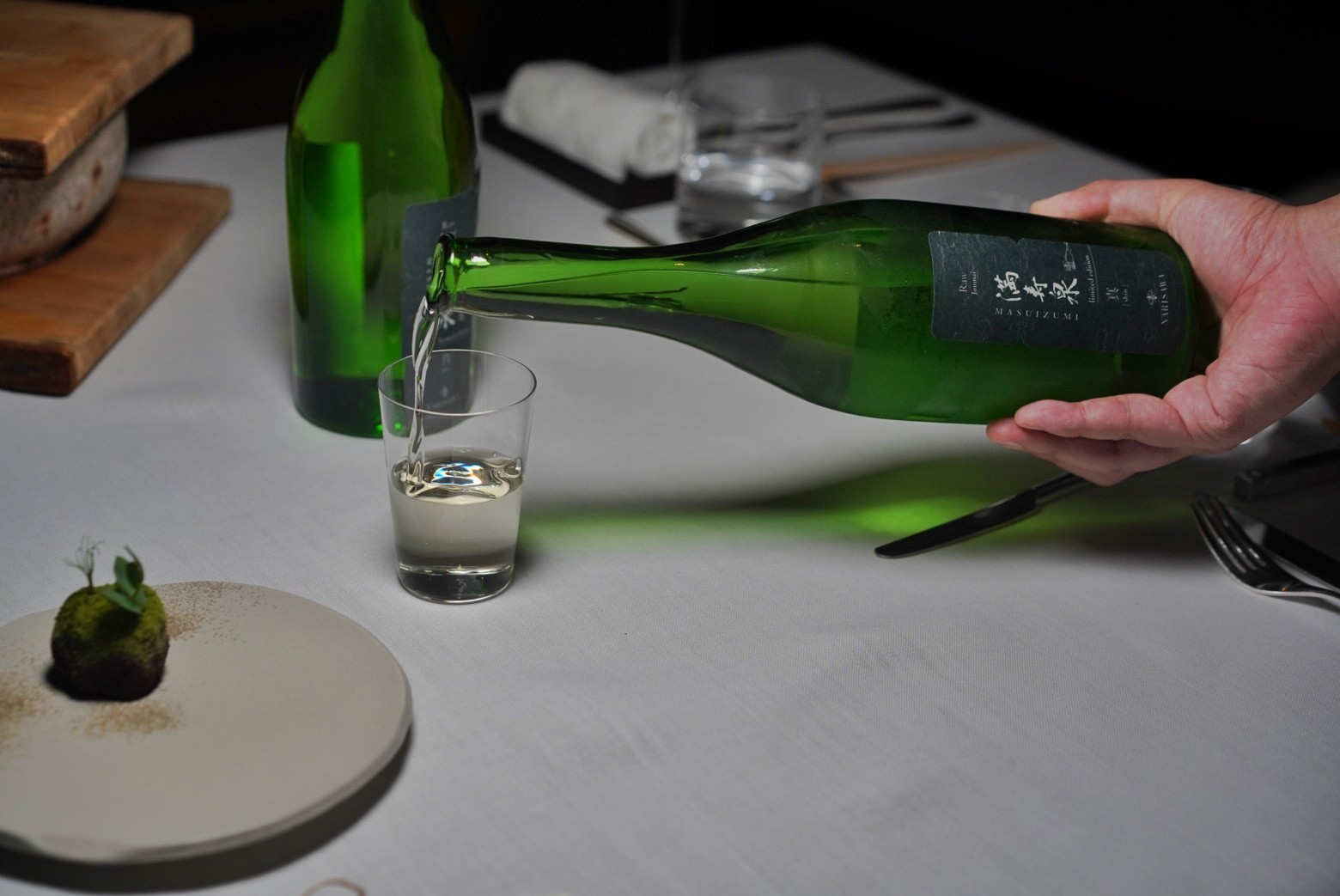
Image by Sophie Steiner/That's
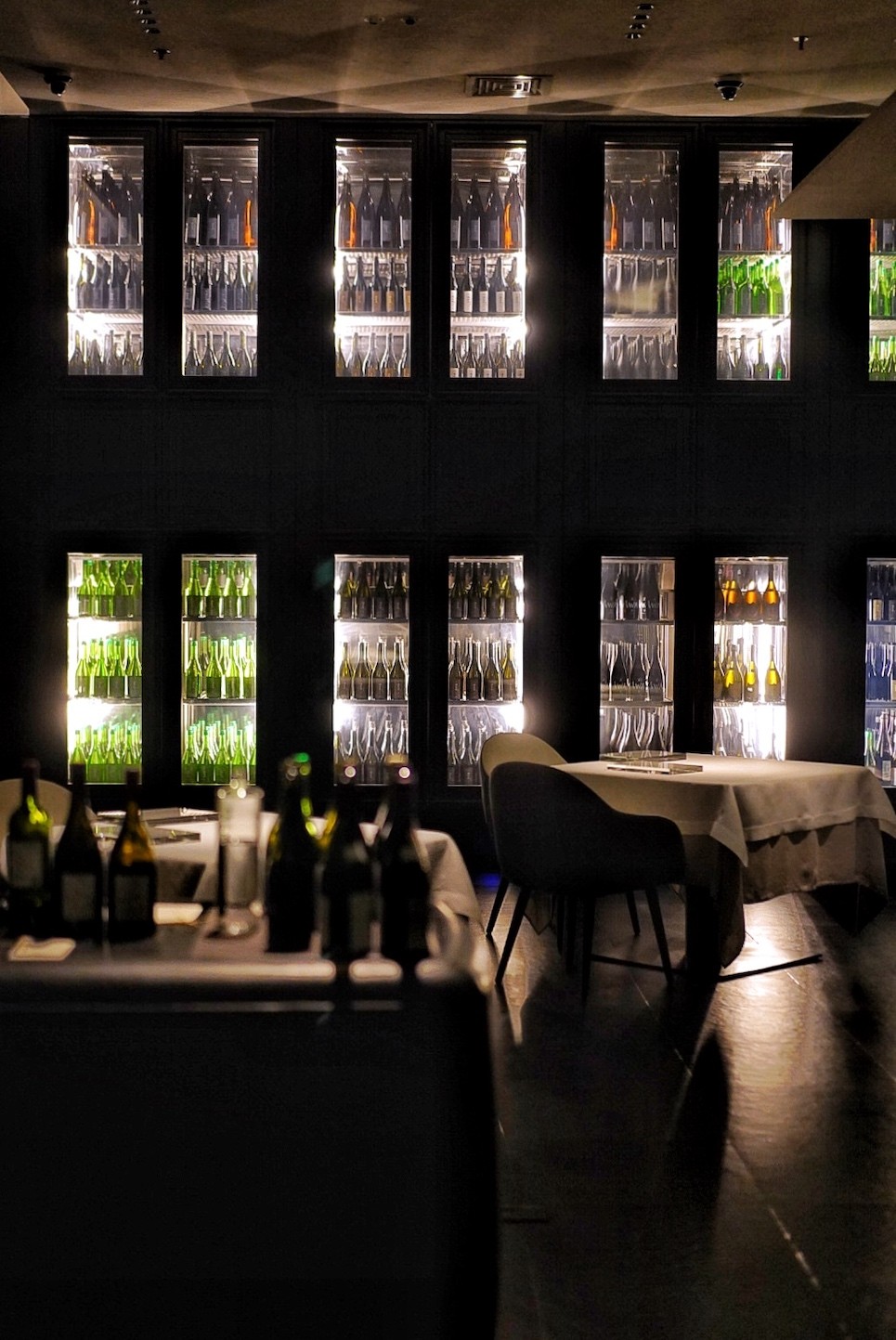
Image by Sophie Steiner/That's
Narisawa Tokyo just celebrated its 20th anniversary, 14 consecutive years of which have garnered it a spot on the World’s 50 Best List.
No easy feat – it’s the only restaurant in all of Asia to accomplish it.
Considered ahead of its time, Narisawa Tokyo was also awarded the Sustainable Restaurant Award in 2013, and a Michelin Green Star for its strong focus on environmentally conscious dining, amongst numerous other accolades.
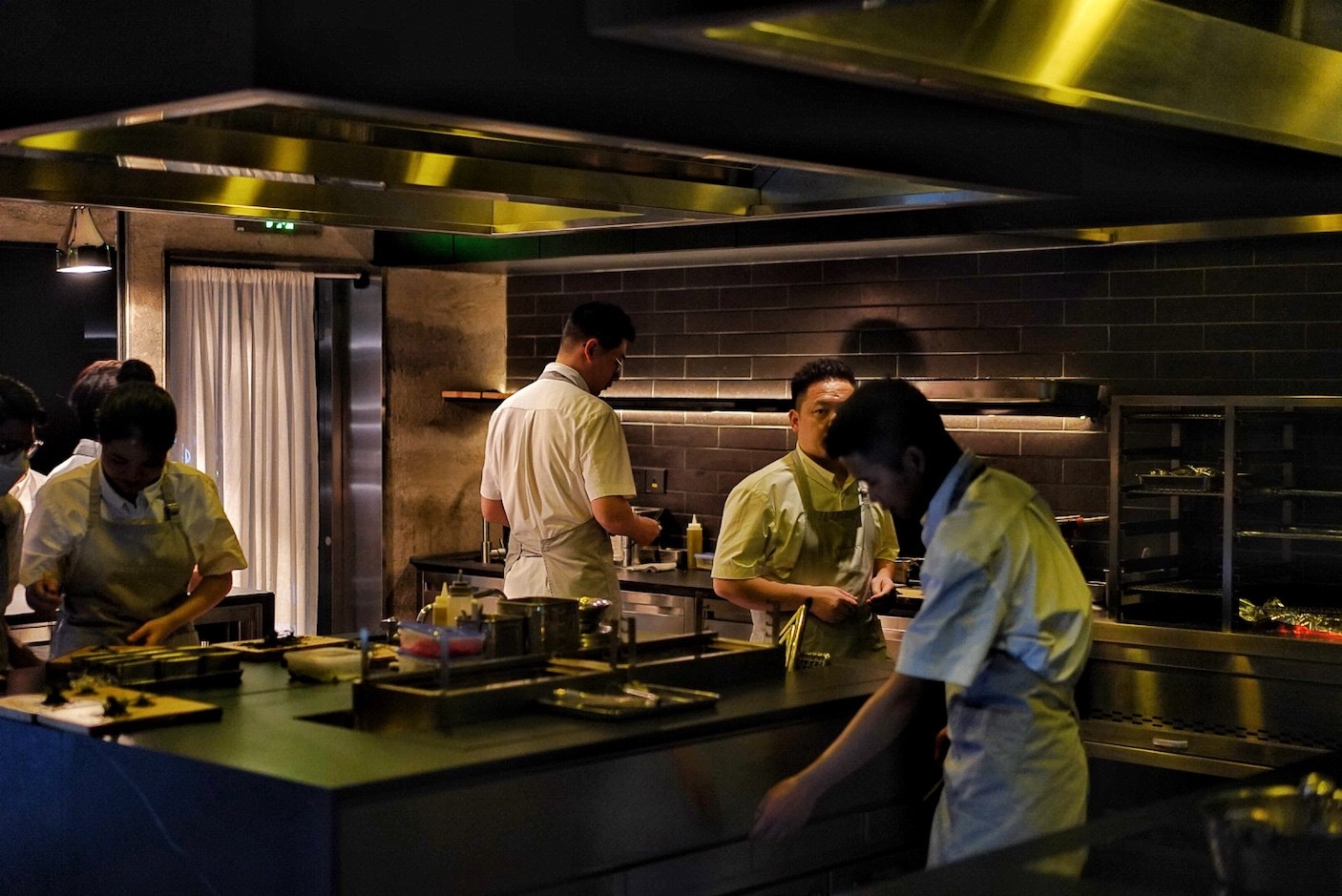
Image by Sophie Steiner/That's
And, with Narisawa Shanghai being the only other location in the entire world outside of Tokyo – a decision to expand that took nearly two decades – this opening is kind of a big deal for the Shanghai dining scene.
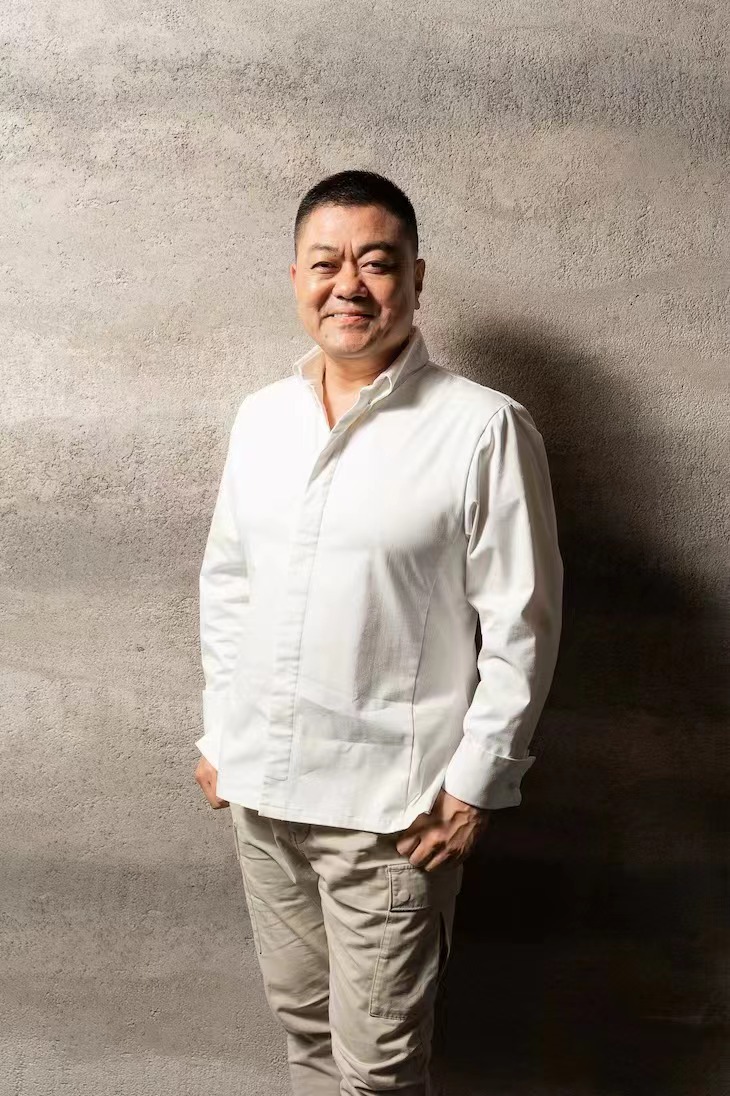
Chef Yoshihiro Narisawa. Image courtesy of Narisawa
With food sustainability as his core tenet, Chef Yoshihiro Narisawa aims to gain a deeper understanding of Chinese culture's influence on the Japanese diet over time, and demonstrate his appreciation for the interconnectivity of both cuisines through his own cooking at the Shanghai location.
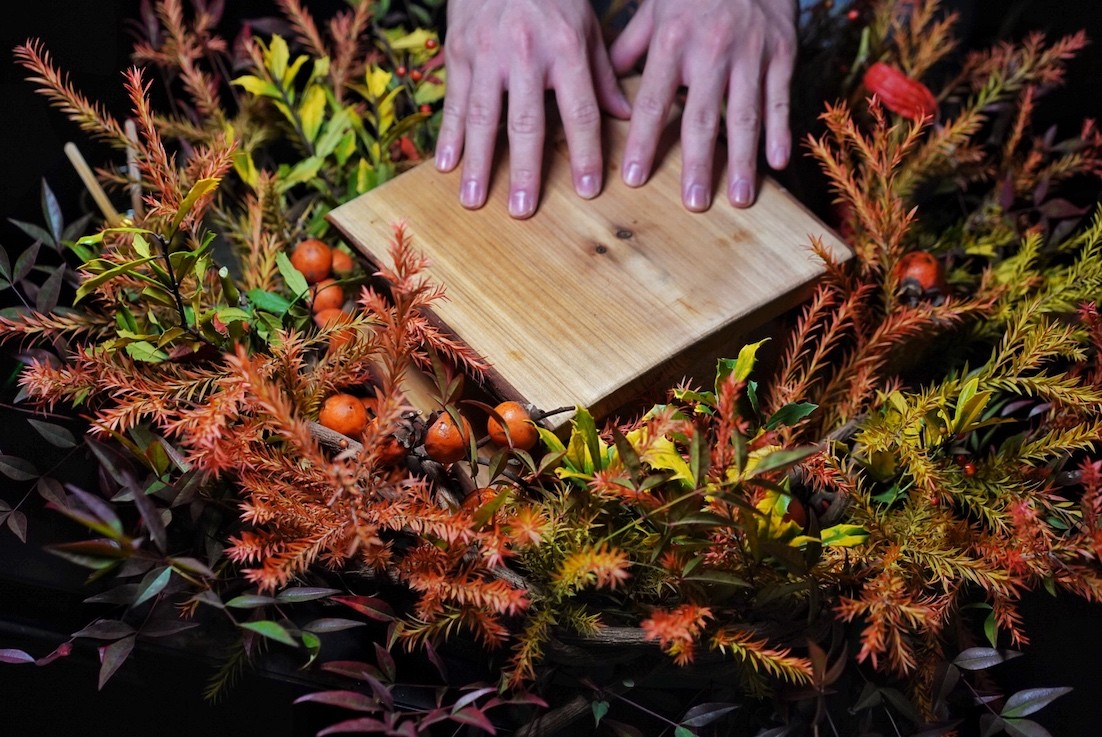
Image by Sophie Steiner/That's
Using local Chinese ingredients, imported global proteins, and a mix of modern cooking techniques built upon a Japanese backbone – a style dubbed 'The Narisawa Way' – the menu takes diners through varying altitudes of Japan’s geography to present naturalistic “satoyama cuisine” – food from the areas between the mountains and flat lands, where people live sustainably, connected directly with nature.

Image by Sophie Steiner/That's
So instead of a gluttonous experience spanning a dozen courses, this omakase meal (comprised of edible works of culinary art) represents a balance of nutrition, sustainably-sourced organic ingredients, respect for Mother Nature, innovative cooking methods, and – well – downright delicious flavor pairings, the likes of which Shanghai hasn’t yet seen.
The Food
Chef Narisawa spent his twenties training in the culinary arts across France, Switzerland and Italy, before returning to Japan in 1996.
Worldly influenced, yet still deeply tied to his Japanese roots, he designed the Narisawa menu to reflect the intersection between these cuisines and cultures – the crux of it being continuous sustainability and gastronomy that’s beneficial to both the body and spirit.
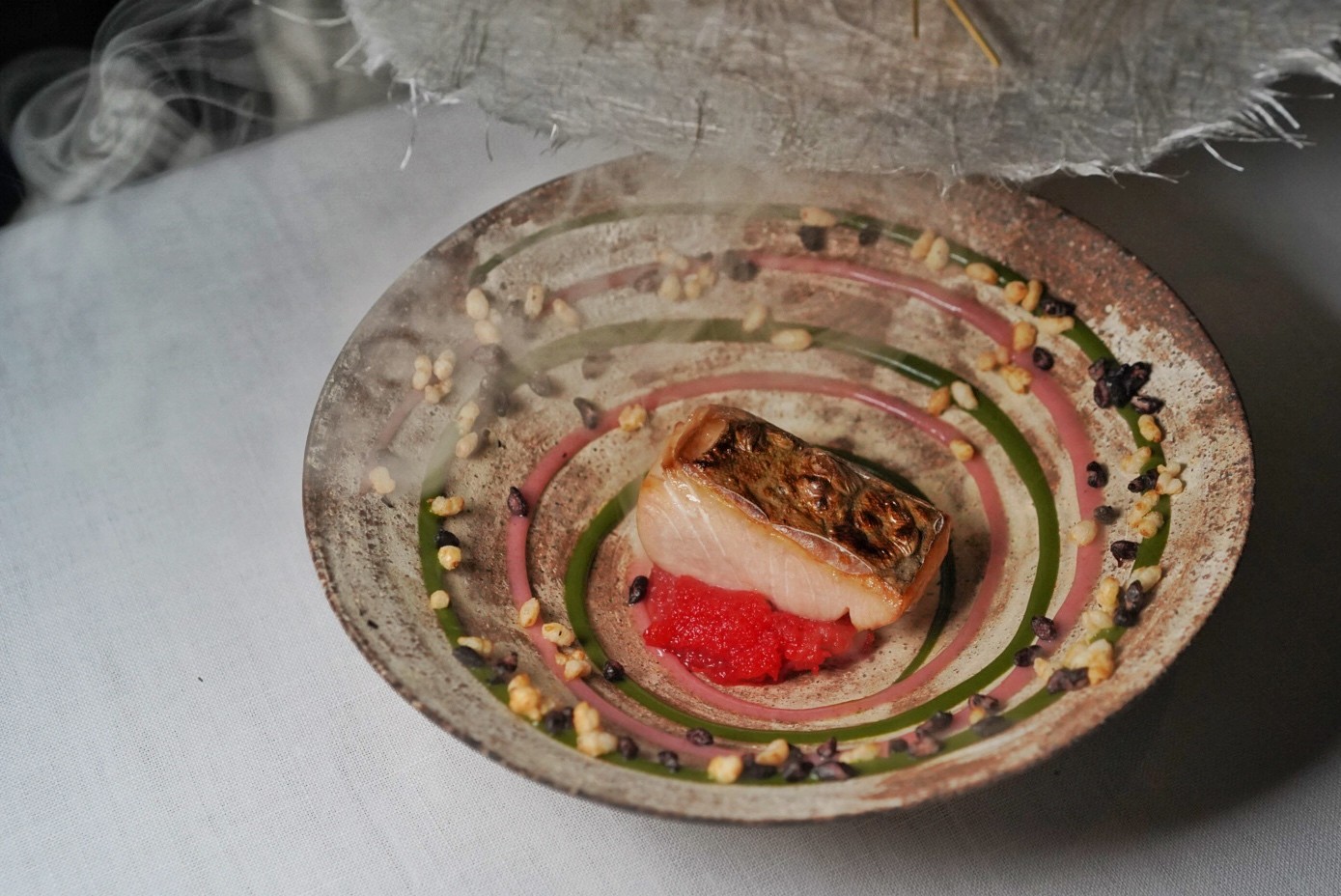
Image by Sophie Steiner/That's
Locally sourcing produce via artisan farmers – from the fields to the forests of China – the ever-evolving seasonal Set Menu (RMB1,800 + 10% service charge) is a celebration of the highest quality Chinese ingredients, aligning with the satoyama cuisine ethos of the venue.
Think Sichuan matsutake mushrooms, Kaluga Queen caviar from Qiandaohu, and Fujian-grown white tea leaves, to name just a few.
And the inspiration runs both ways; several dishes that debuted on the Shanghai menu can already be found at Narisawa Tokyo.
While said menu guarantees something new for repeat diners, a few of the core dishes will always remain – ones that embody what Narisawa is all about.
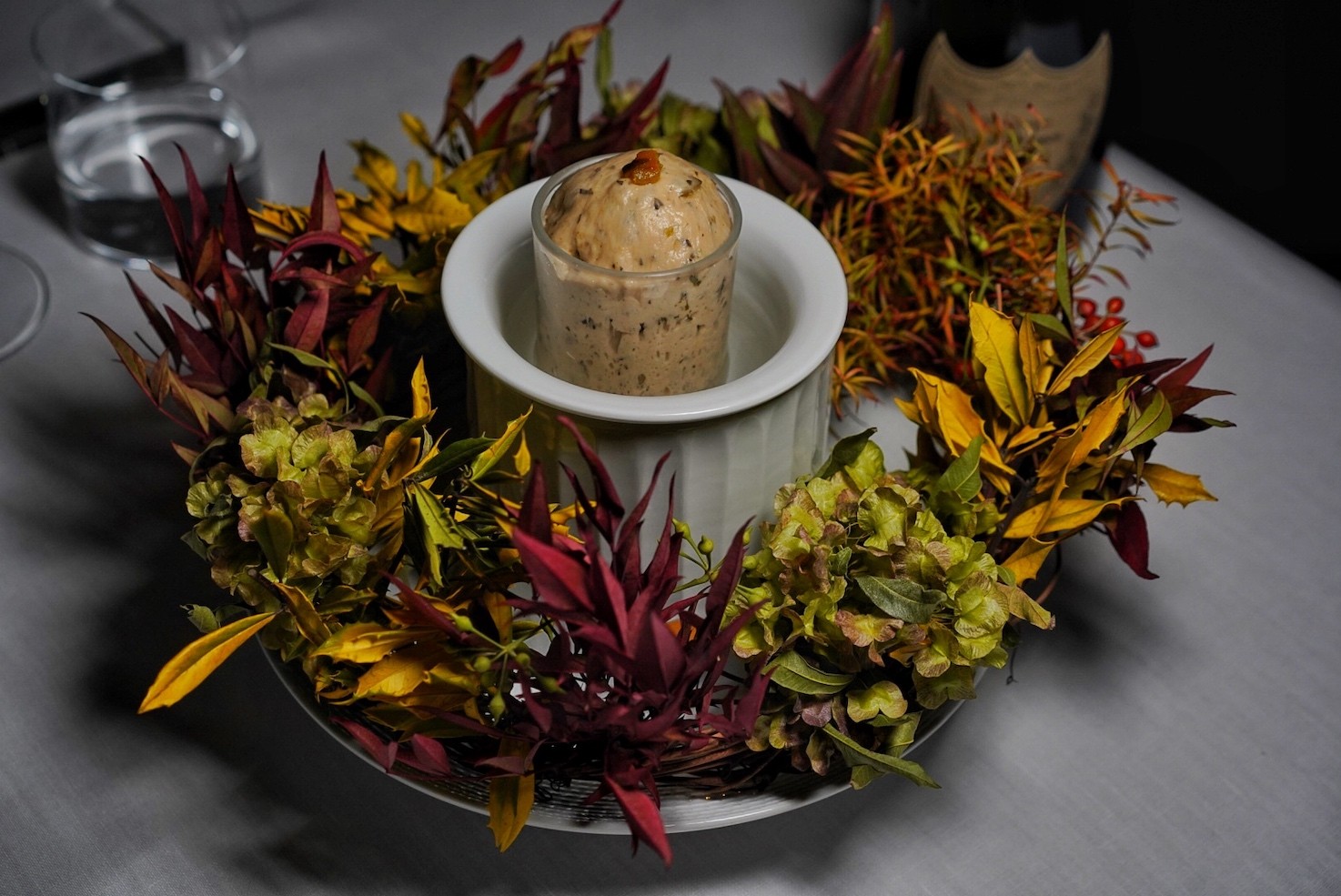
Image by Sophie Steiner/That's
Case in point, the Bread of the Forest is a visual metaphor for the process of food evolution through the act of fermentation.
Using wild-sourced yeast, the bread dough rises tableside, bubbling over the glass container in which it’s originally presented.
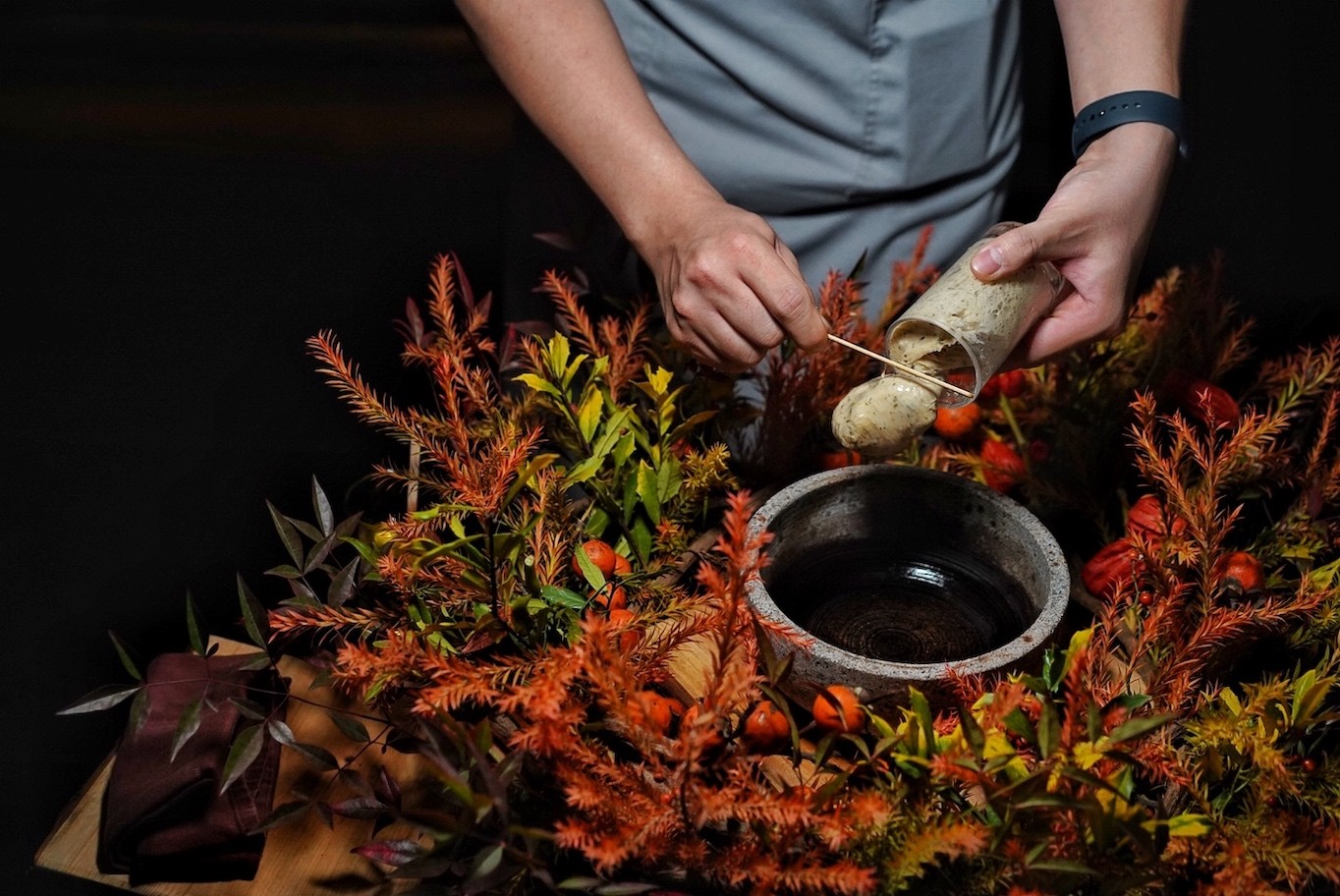
Image by Sophie Steiner/That's
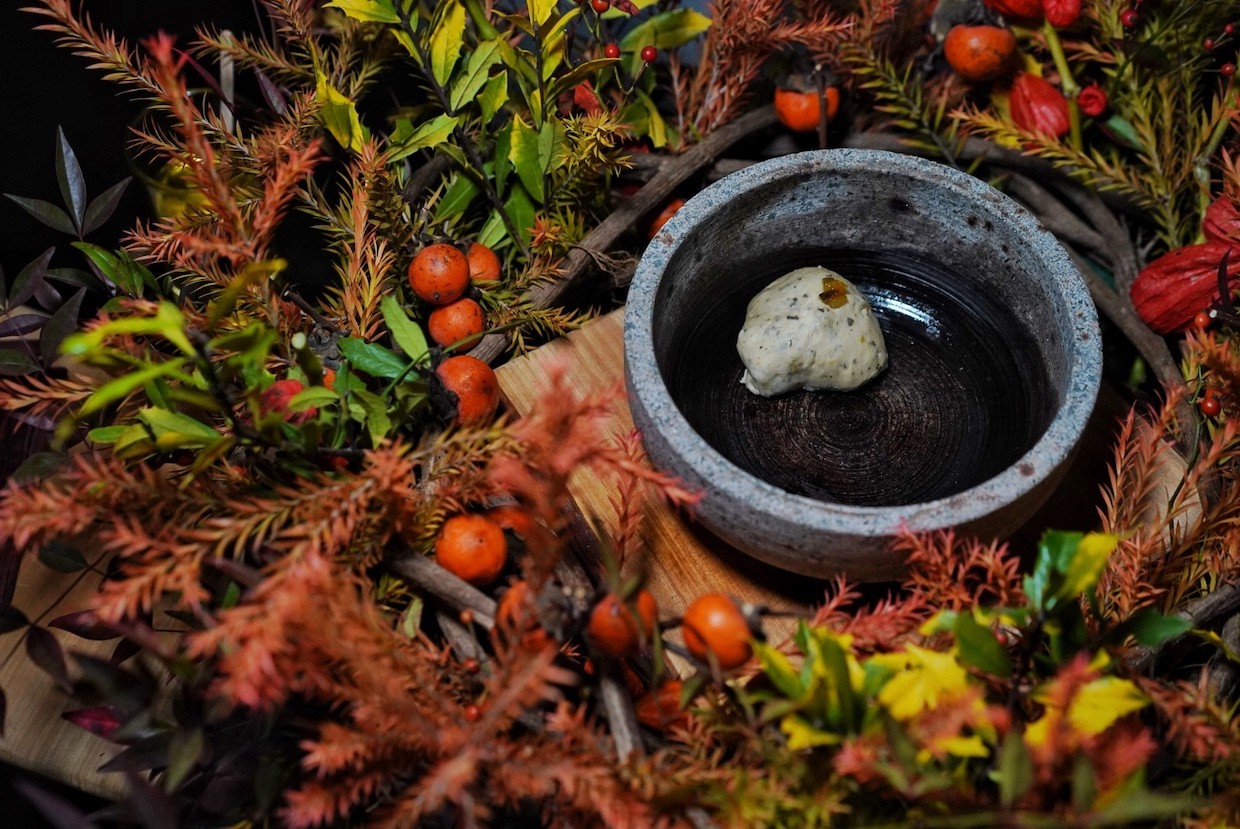
Image by Sophie Steiner/That's
The process represents the microbes that surround us – the building blocks of all life – that are invisible to the naked eye.
Yet, while diners enjoy their first few courses, the citrus and Fujian white tea-laced dough expands in size before being placed in a 220°C stone pot to bake, also on the dining table.
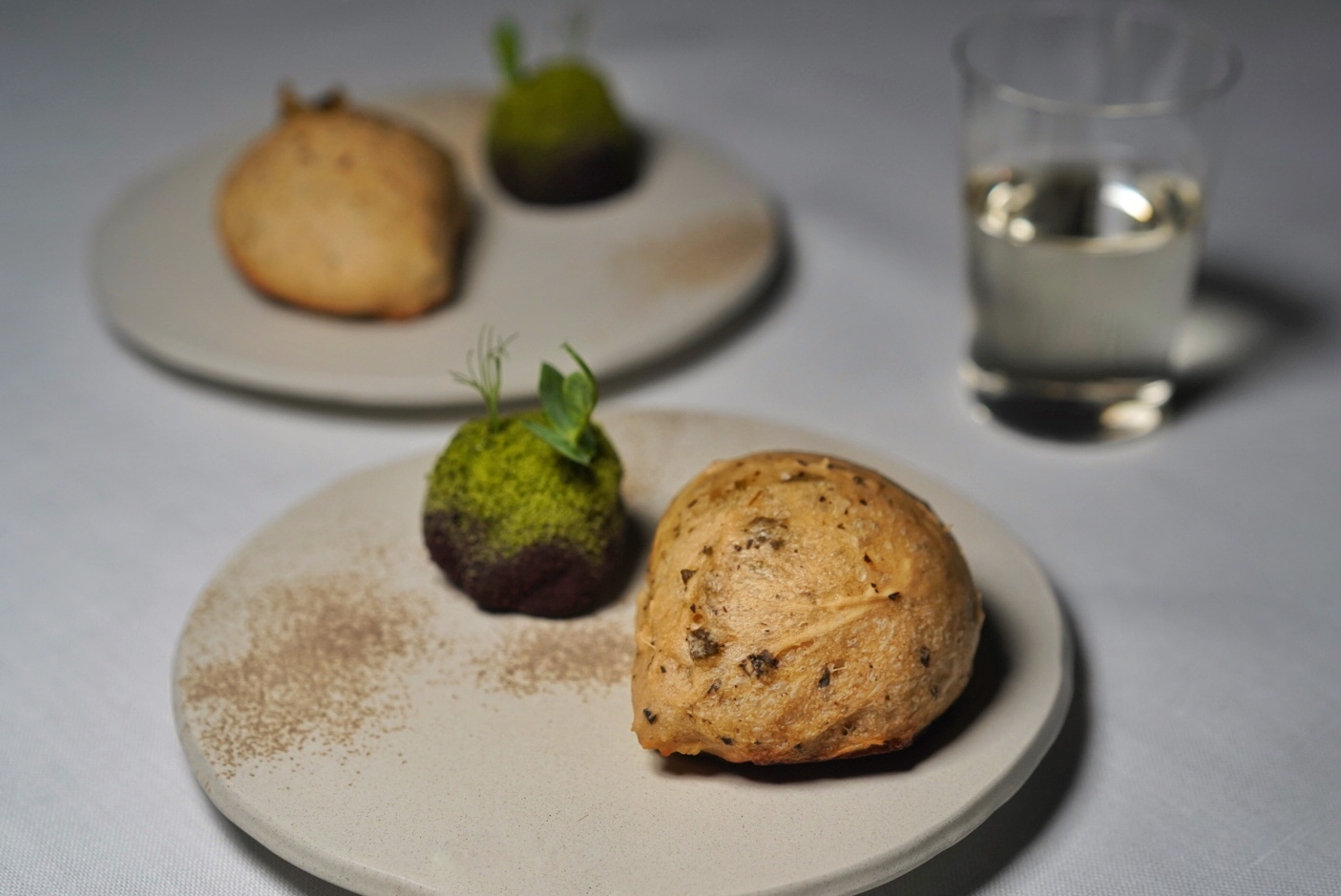
Image by Sophie Steiner/That's
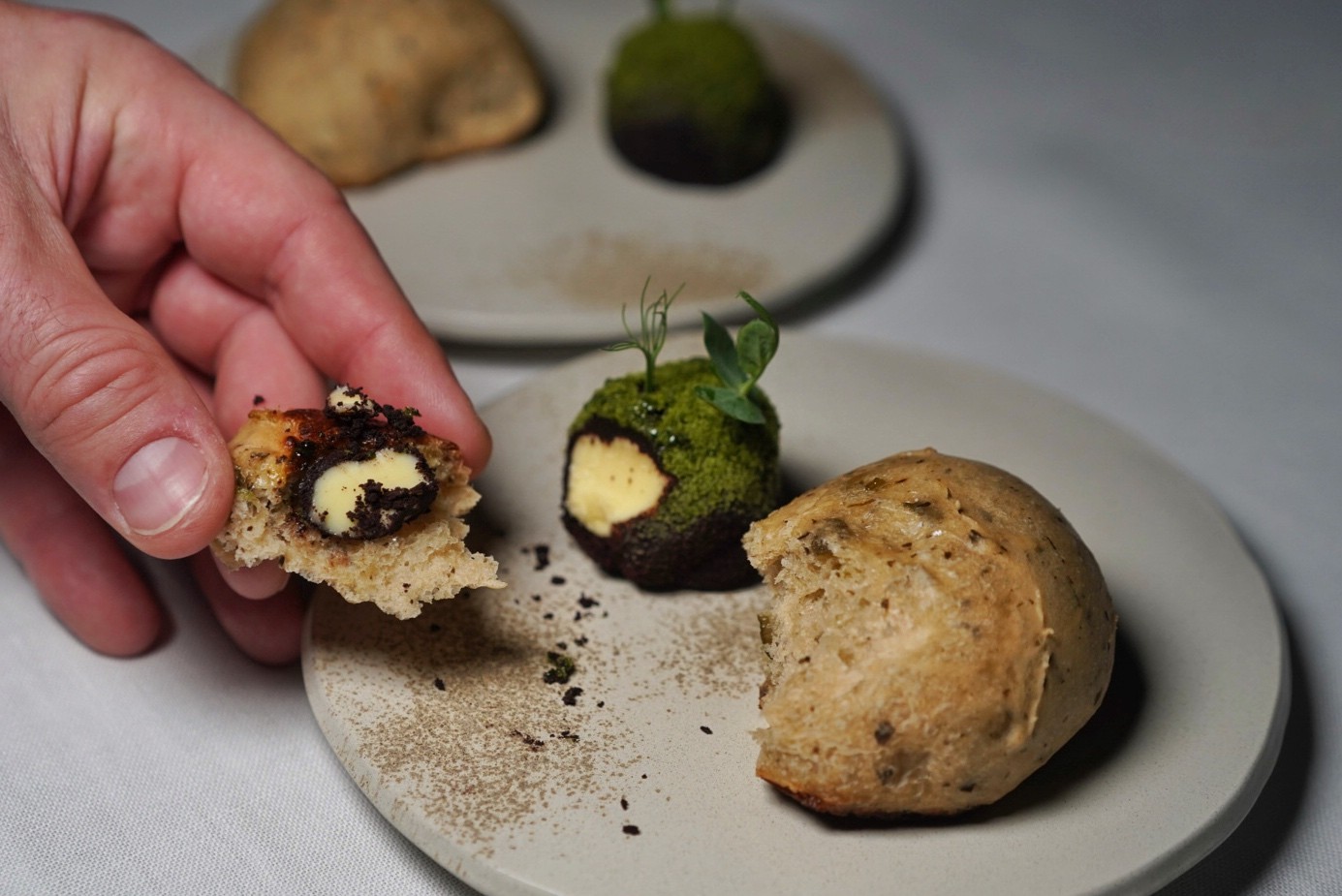
Image by Sophie Steiner/That's
Served steaming, the plush buns dimple and pull apart in stretchy tears, accompanied by a pad of 'mossy' butter – coated in a black olive and chlorophyll powder to resemble the forest floor.
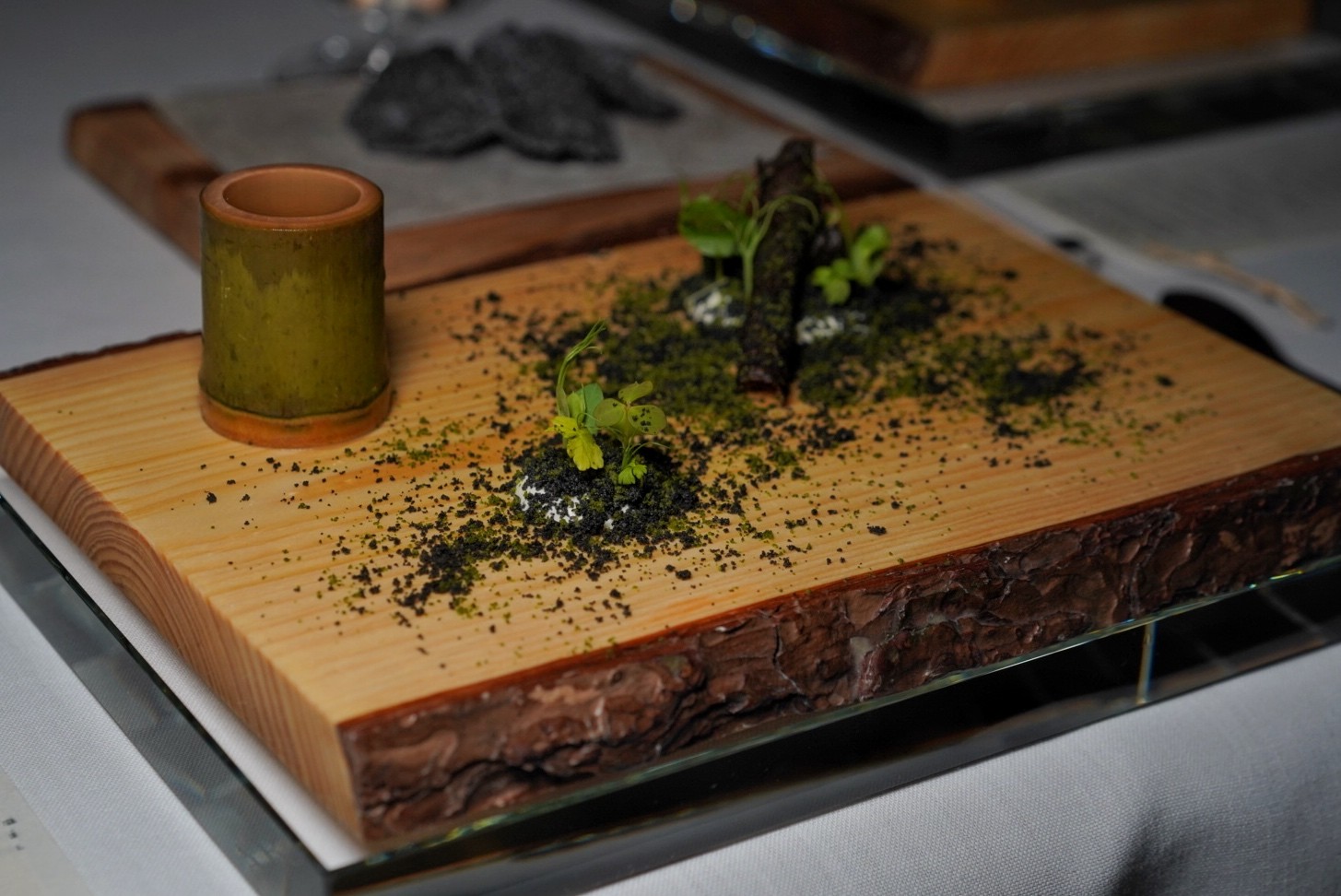
Image by Sophie Steiner/That's
Courses follow an earthy progression, weaving first through the Scenery of Satoyama – representing the place where humans and nature coexist.
A fermented soymilk purée is dusted in bamboo charcoal 'soil' and powdered chlorophyll 'moss,' meant to be scooped with arrowroot crisps or an edible 'tree branch' made from burdock skin.
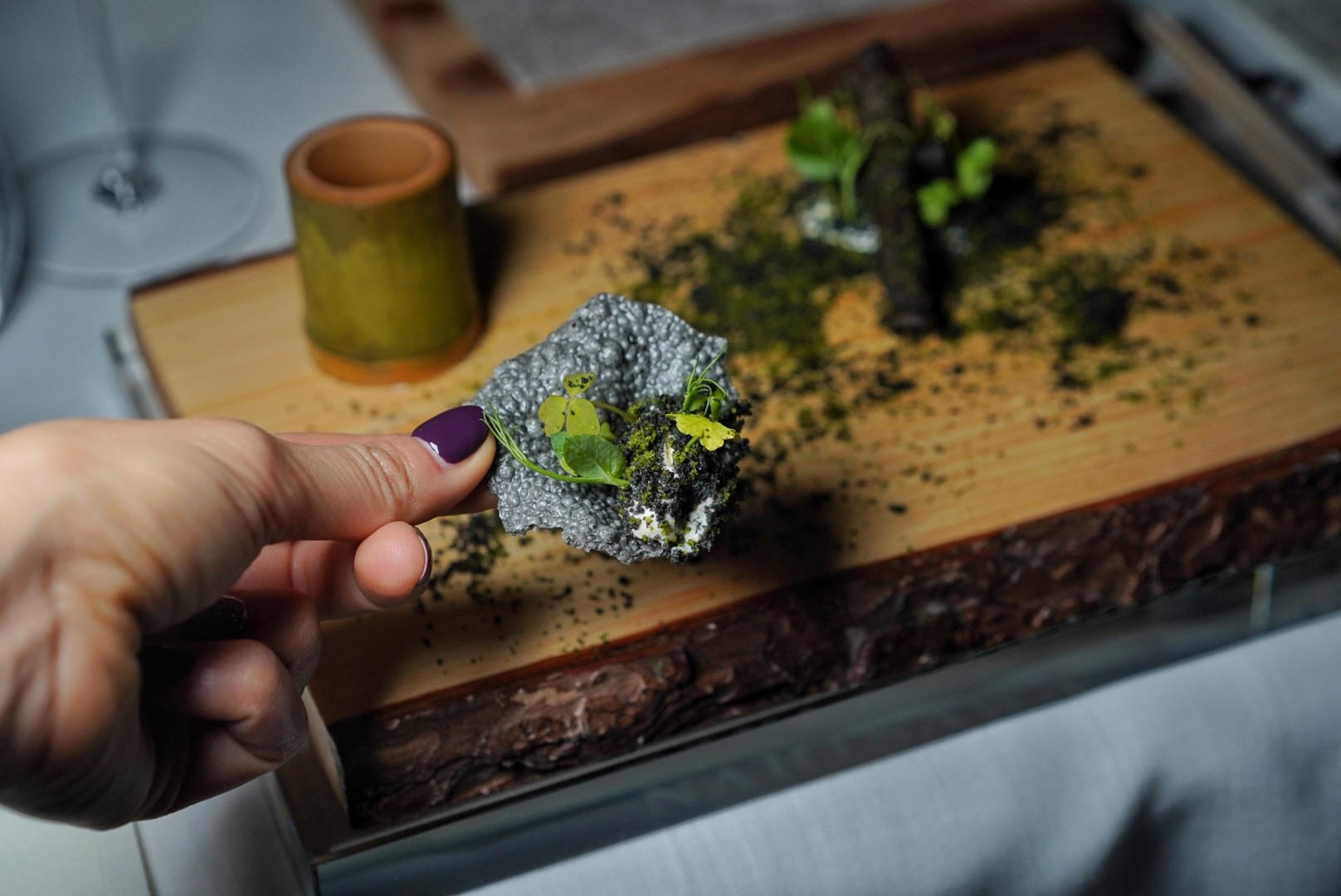
Image by Sophie Steiner/That's
Playfully plated, diners can choose to use their chopsticks, a spoon, or their hands to “forage through the forest.”
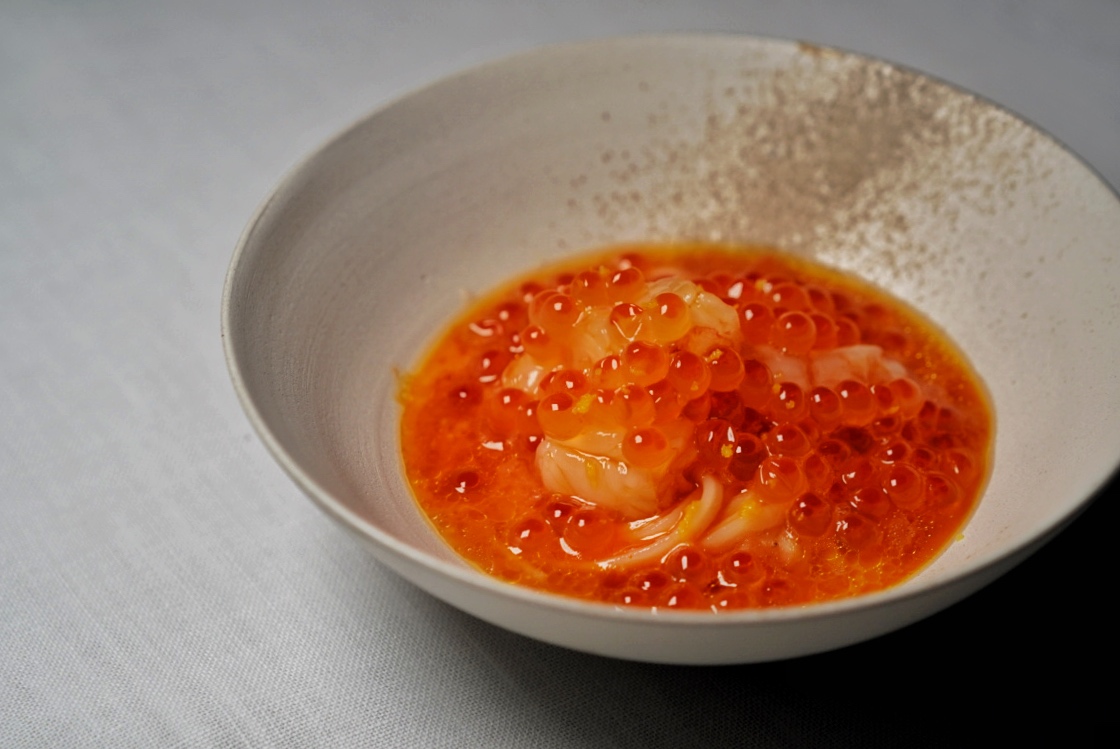
Image by Sophie Steiner/That's
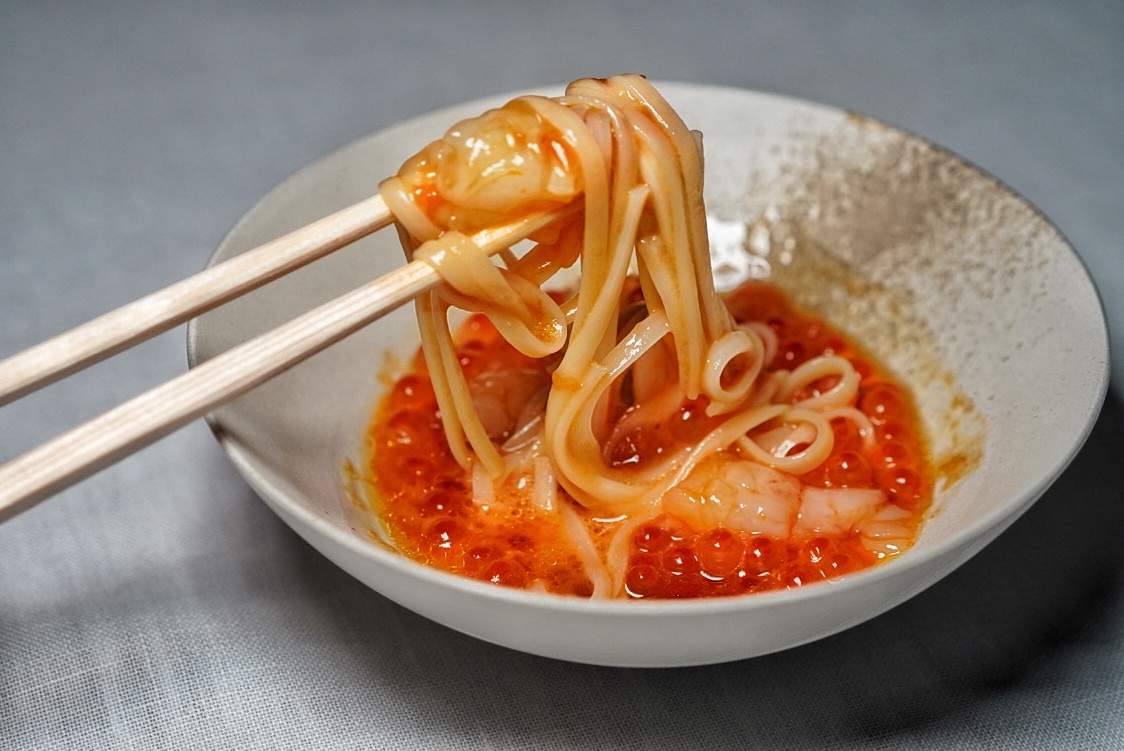
Image by Sophie Steiner/That's
Cold, silken Udon mimic the slippery, velvety texture of sweet Botan shrimp. In contrast to its visually simplistic presentation, each mouthful is bursting with ripe tomato flavors, juicy and tart, augmented by the briny pop of salmon roe.
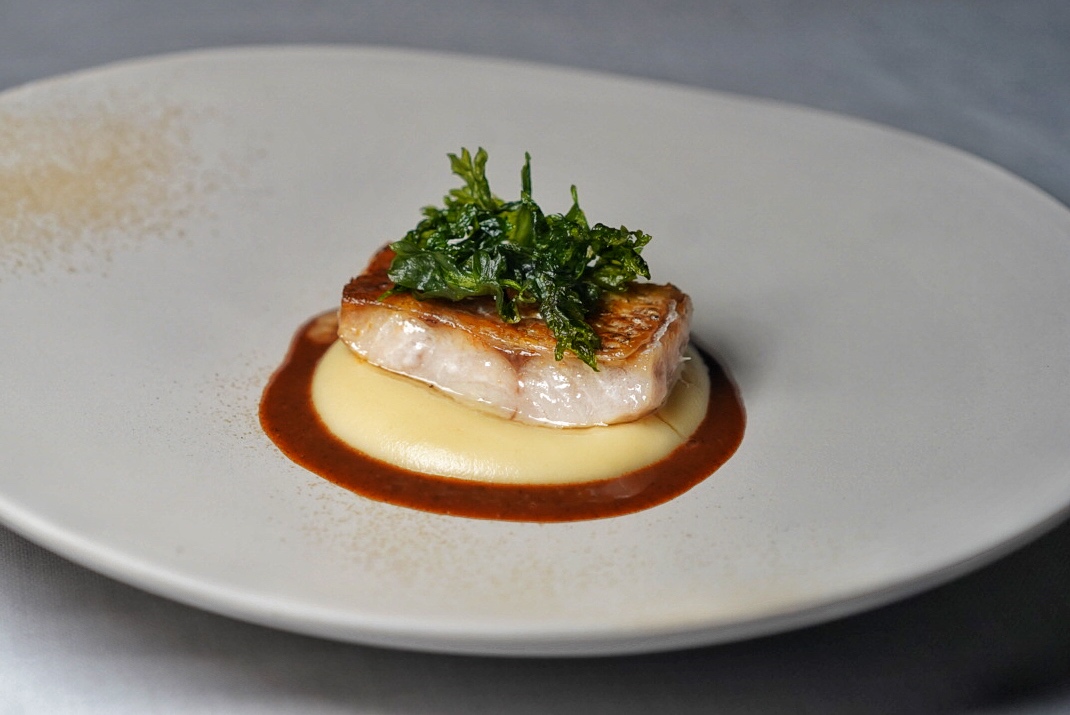 Rosy Seabass and celeriac purée. Image by Sophie Steiner/That’s
Rosy Seabass and celeriac purée. Image by Sophie Steiner/That’s
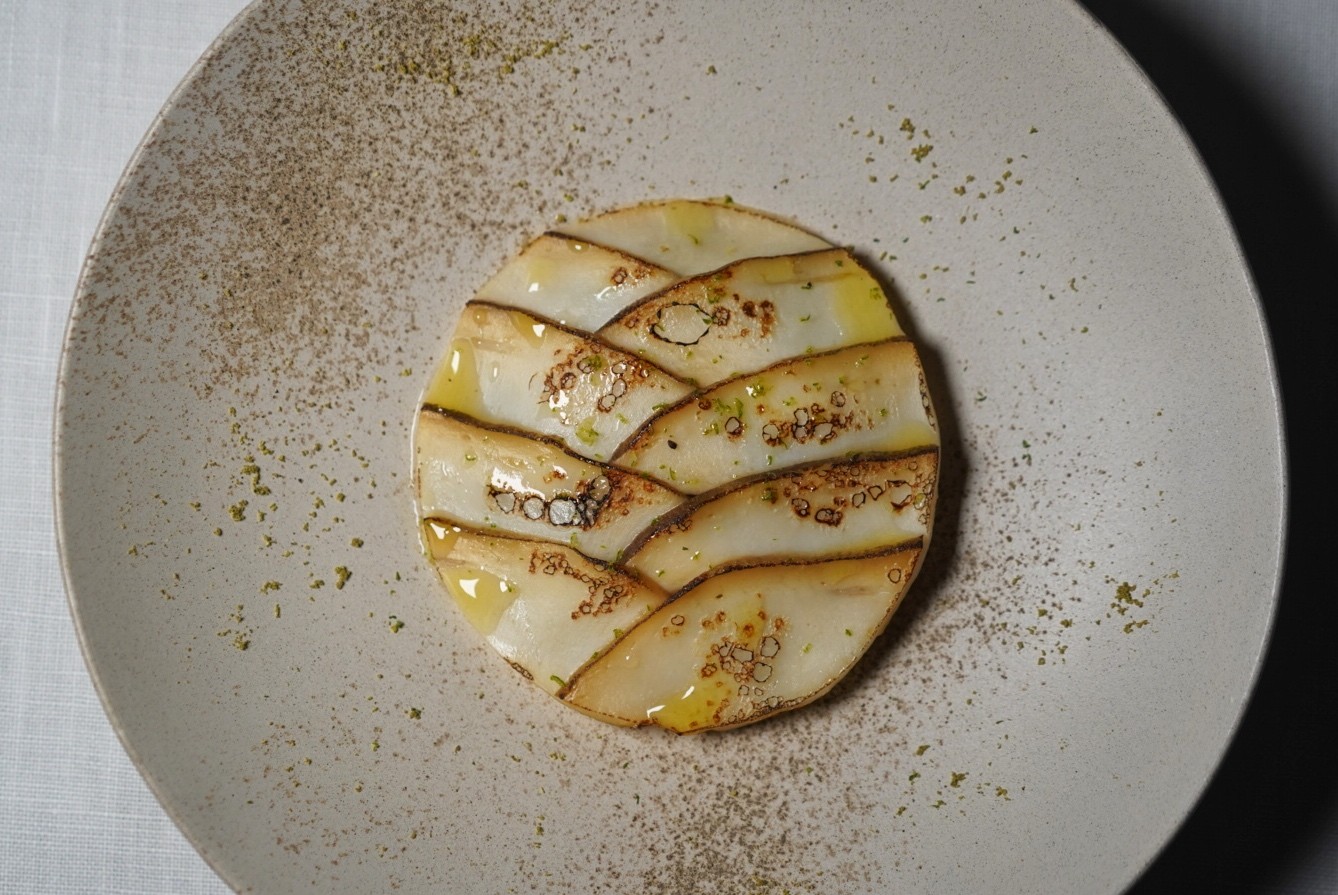
Image by Sophie Steiner/That's
Slow-cooked in sake and dashi broth steam for eight hours, thin pleats of a la minute torched abalone sheath a nori and freshly shaved wasabi risotto, the charred bitter notes amplifying the nose-tingling sansho pepper dust – a cousin of the Sichuan peppercorn.
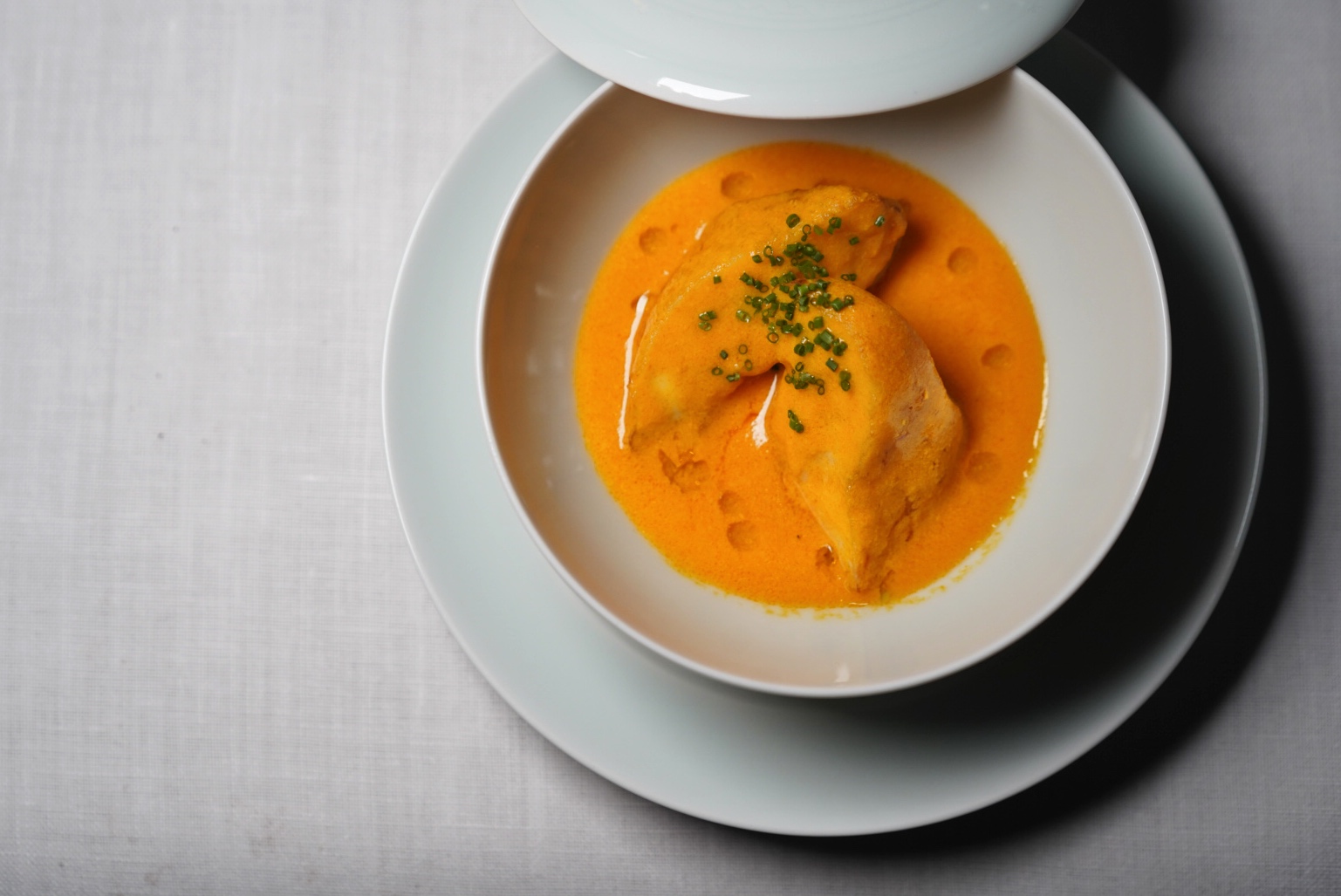
Image by Sophie Steiner/That's
When a soup is built upon what a restaurant refers to as “luxury essence” it’s no shock that the ensuing bowl will be of the utmost indulgence, and the Blowfish with Shanghai Crab is just that.
Using a blend of hairy crab roe – an ultra-rich, spongy orange mass that proffers that coveted unctuous mouthfeel – with aforementioned “luxury essence” – a stock made from pork, chicken, ham, and sake – the resulting stew is more of a viscous sauce, pleasantly grainy and robust.
The puffer fish is first soaked in a soy sauce, mirin and sake marinade before being flash-fried, a traditional Japanese cooking method known as tatsuta age that results in buttery, firm flesh that flakes away under just the slightest pressure.
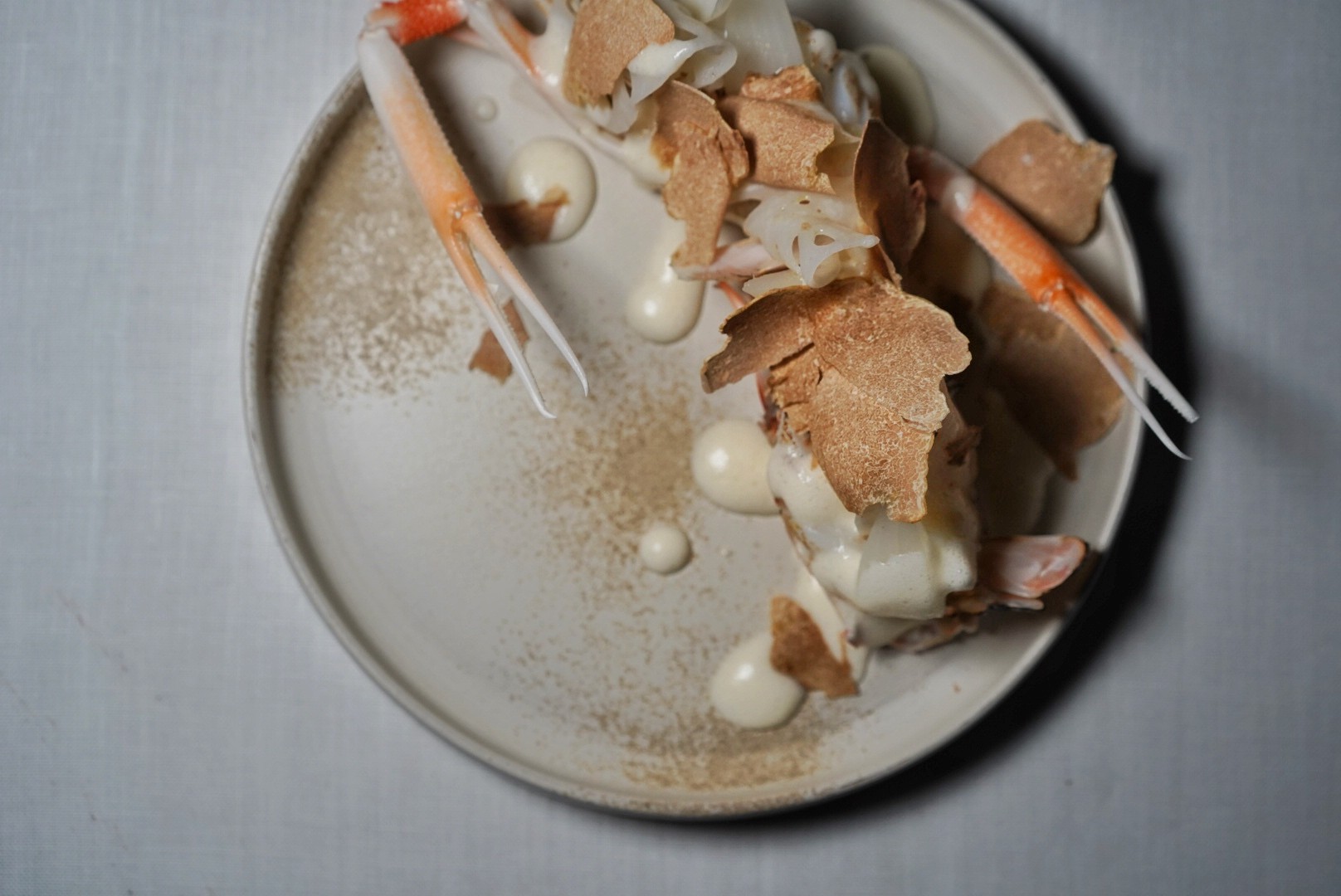 Scampi, scallop cream, white truffle, lotus root and onion. Image by Sophie Steiner/That’s
Scampi, scallop cream, white truffle, lotus root and onion. Image by Sophie Steiner/That’s
 Homemade bottarga, Japanese yam, sake. Image by Sophie Steiner/That’s
Homemade bottarga, Japanese yam, sake. Image by Sophie Steiner/That’s
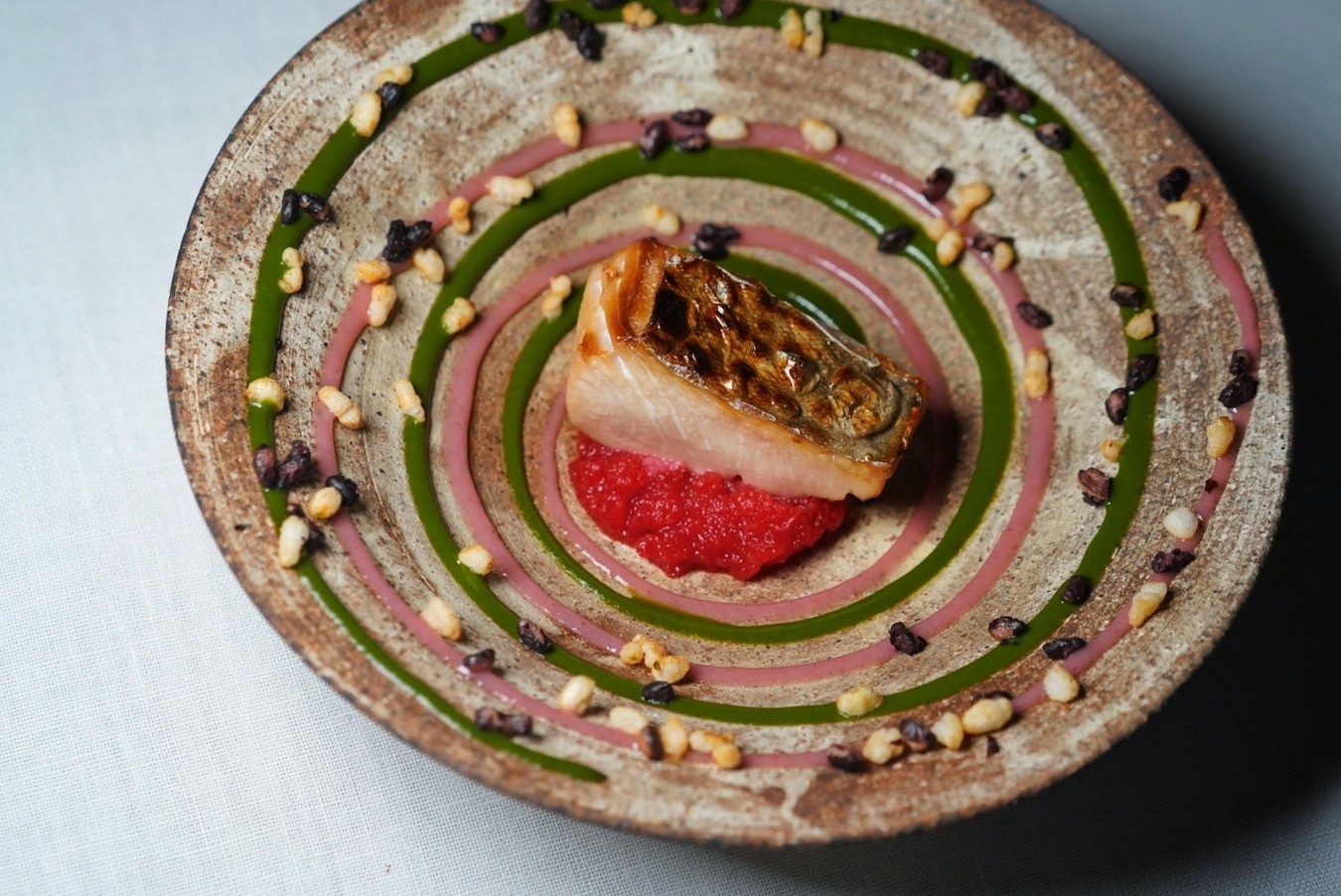
Image by Sophie Steiner/That's
A Narisawa signature, the Rich Harvest represents the rice cultivation season, with elements of the grain pervading every layer.
Pink and green swirls of fermented rice koji perimeter the bowl, studded with puffed rice kernels, the former enhanced by pickled plum and red shiso, while the later offers hints of green shiso and white miso.
But the centerpiece is a binchotan charcoal grill-scorched slab of Fujianese Spanish mackerel, plated above a daikon mash lined with citrus and rice vinegar ponzu.
Equally thoughtful and whimsical, the plate plays homage to the diverse usage of the humble grain of rice.
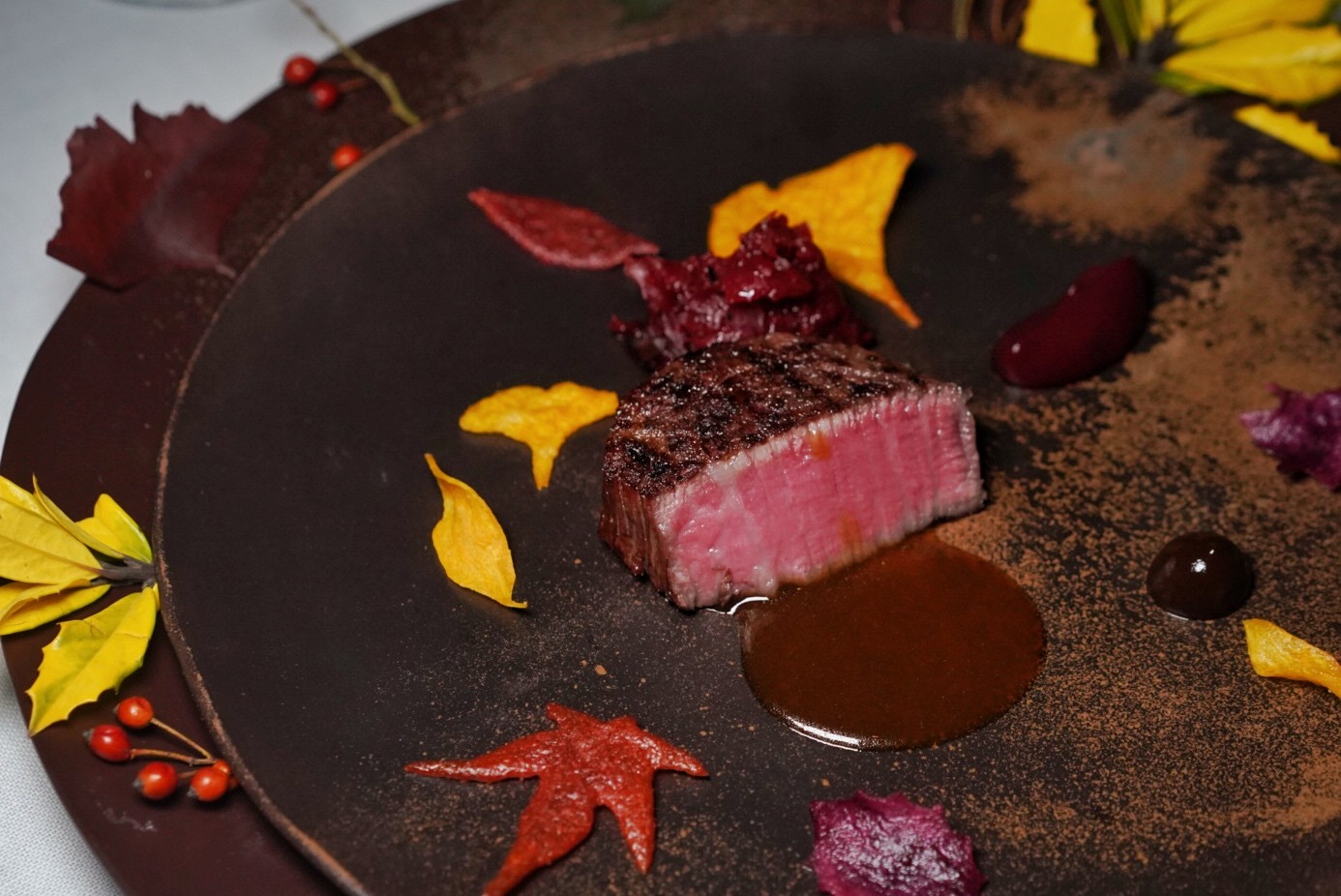 Wagyu Filet Mignon, beetroot, black garlic. Image by Sophie Steiner/That’s
Wagyu Filet Mignon, beetroot, black garlic. Image by Sophie Steiner/That’s
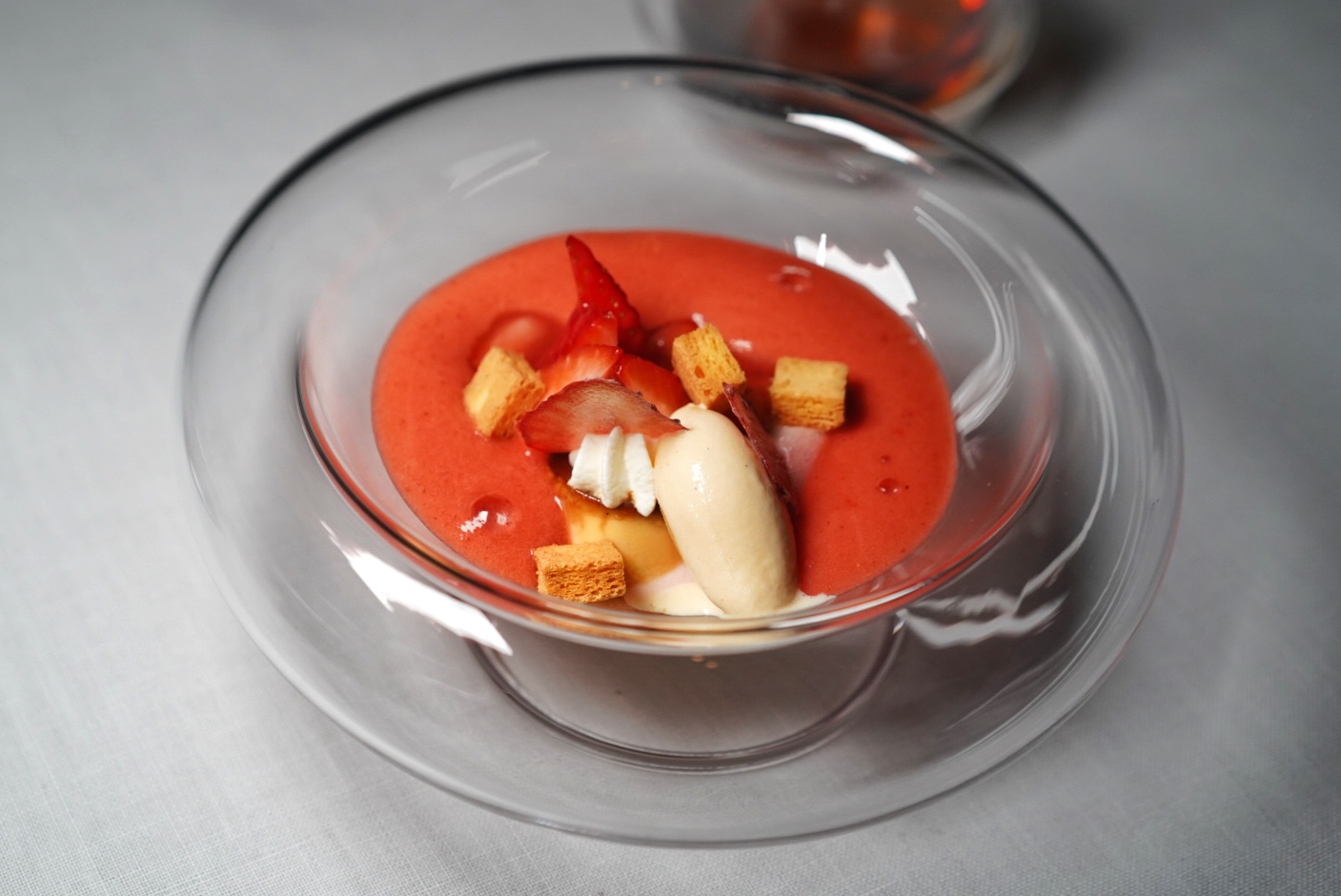 Dongbei Strawberry, caramelized flan, vanilla ice cream. Image by Sophie Steiner/That’s
Dongbei Strawberry, caramelized flan, vanilla ice cream. Image by Sophie Steiner/That’s
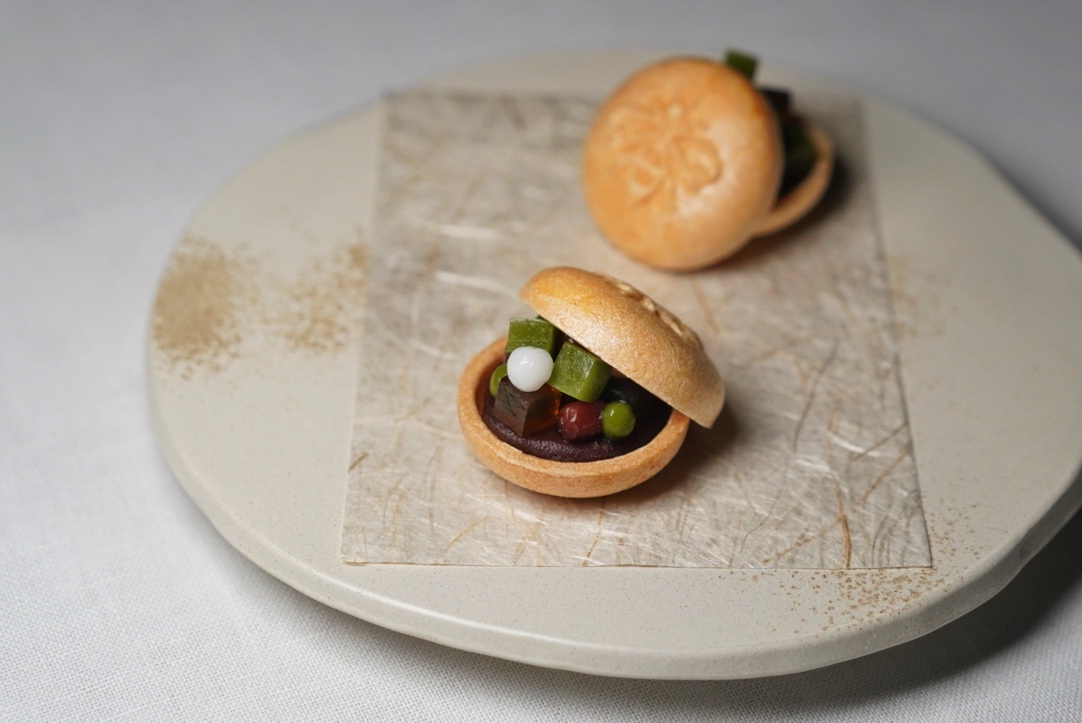
Image by Sophie Steiner/That's
An alternative to the customary petite fours, a Narisawa-branded rice flour cracker – known in Japanese as monaka – is filled with cubes of Matcha mochi and a shmear of brown sugar red bean purée, a demurely sweet crunch to end the meal on high.
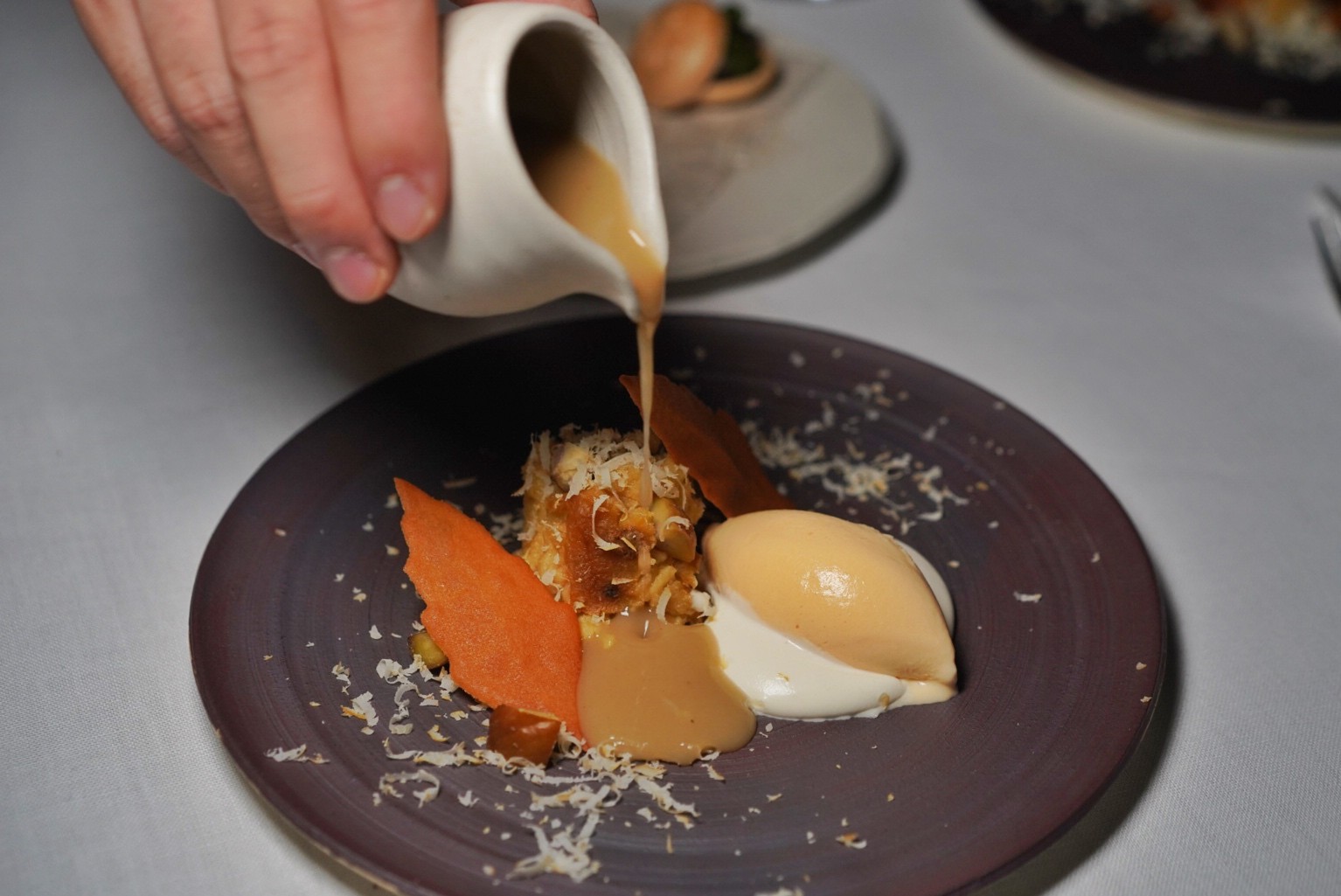 Chestnut, sweet potato, Yamazaki whiskey ice cream. Image by Sophie Steiner/That’s
Chestnut, sweet potato, Yamazaki whiskey ice cream. Image by Sophie Steiner/That’s
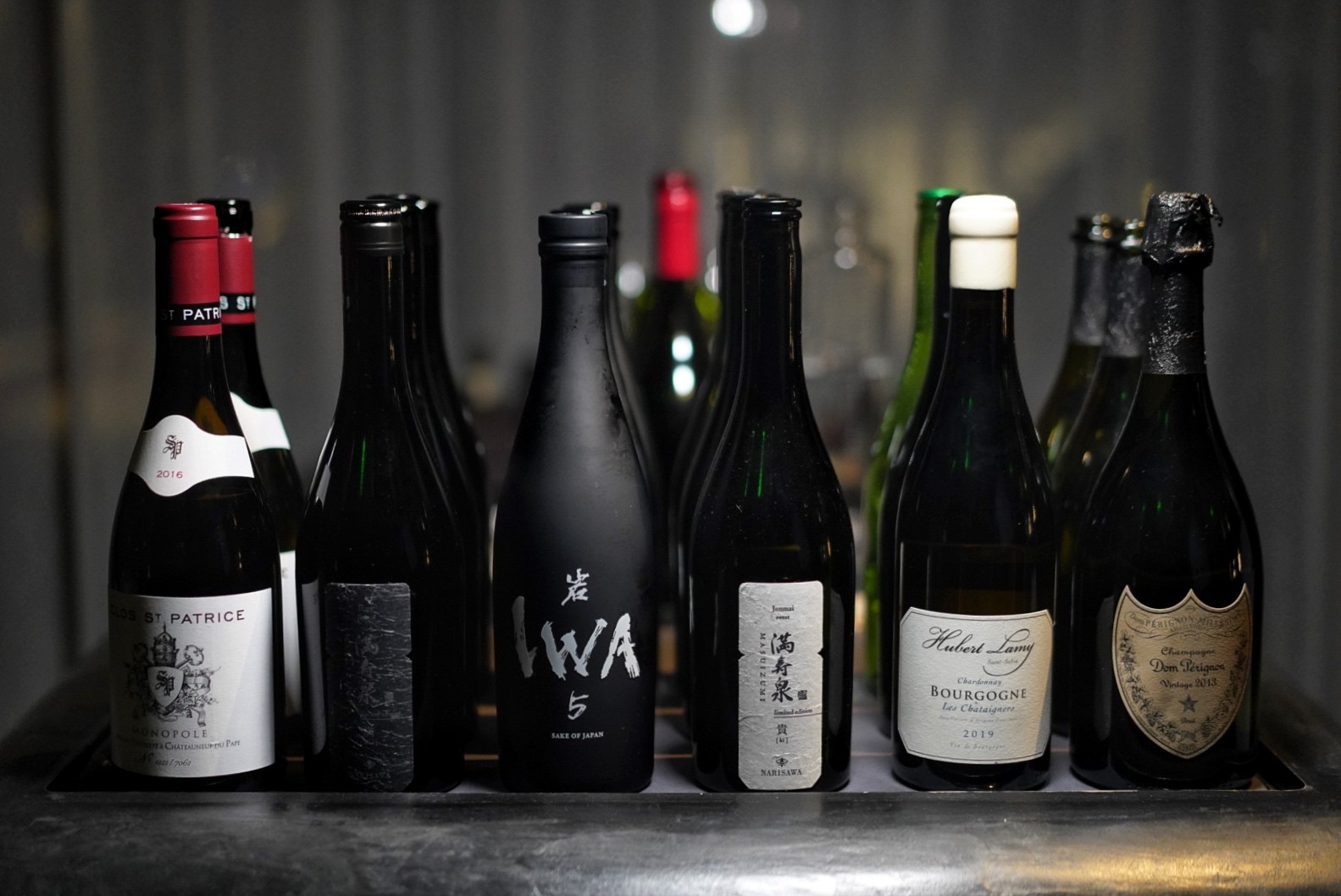
Image by Sophie Steiner/That's
Guests can further elevate their dining experience with a Sake Pairing Menu (RMB1,200), showcasing the hand-selected sakes hailing from the only two breweries that Chef Narisawa works with.
Masuda Sake Company, a hand-brewed sake that employs traditional methods – like shingin polishing to maintain the utmost umami core of the rice kernel – has even created a roster of sakes exclusively brewed for Narisawa, to align with his gastronomic vision.
The Vibe
Notably – and purposefully – small, to better account for every detail, the restaurant seats only 26 across square tables and a bar that encircles the kitchen.
There is also a private dining room for another eight, and a sprawling terrace that doubles the venue’s size, to be used for events and post/pre-meal lounging for guests once the weather warms again.
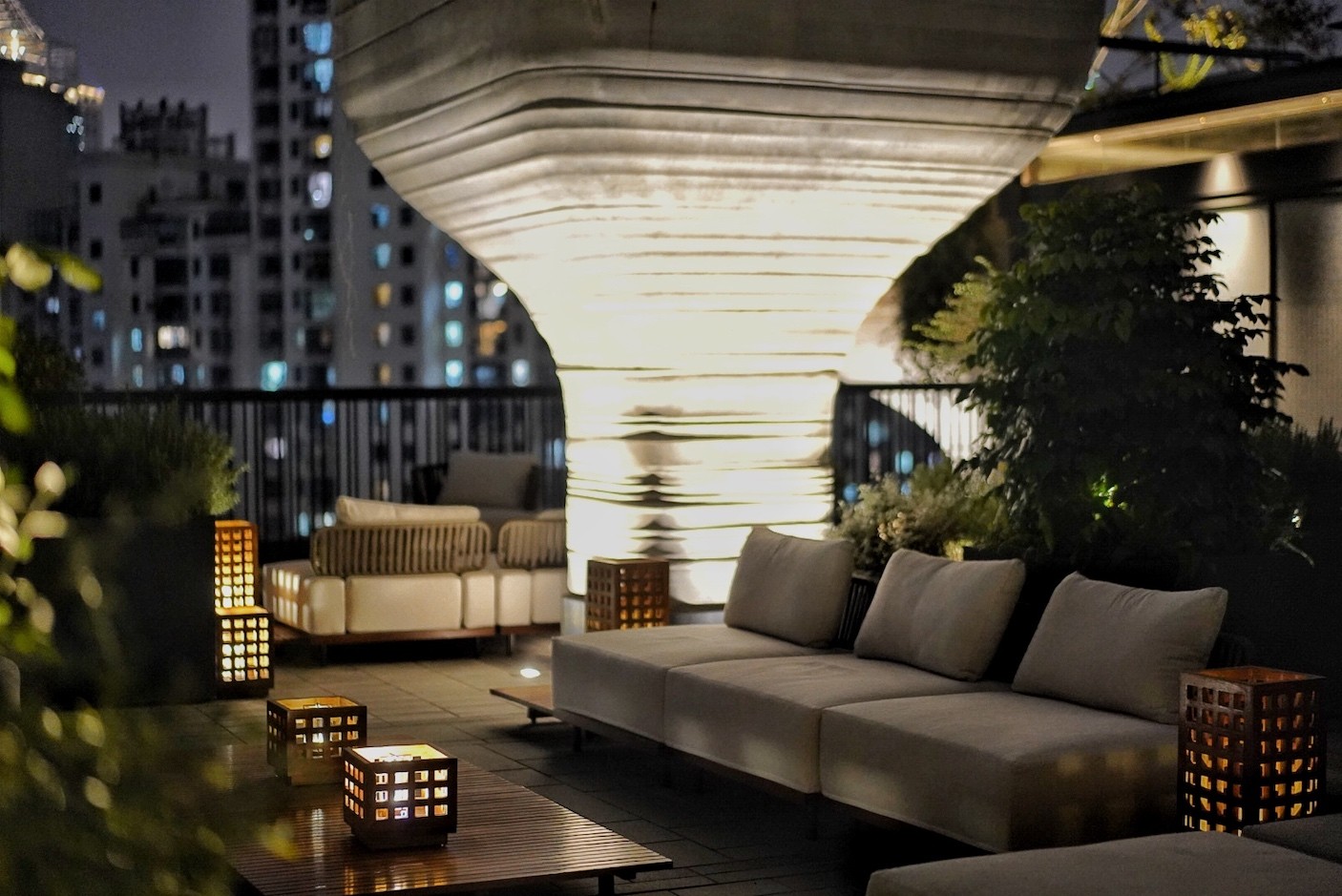
Image by Sophie Steiner/That's
The focal point is the expansive open kitchen, a copacetic display of streamlined excellence where nothing is superfluous, and the flurry of hands, the leap of the flames, and the ding of timers is what carries diners through to the next course.
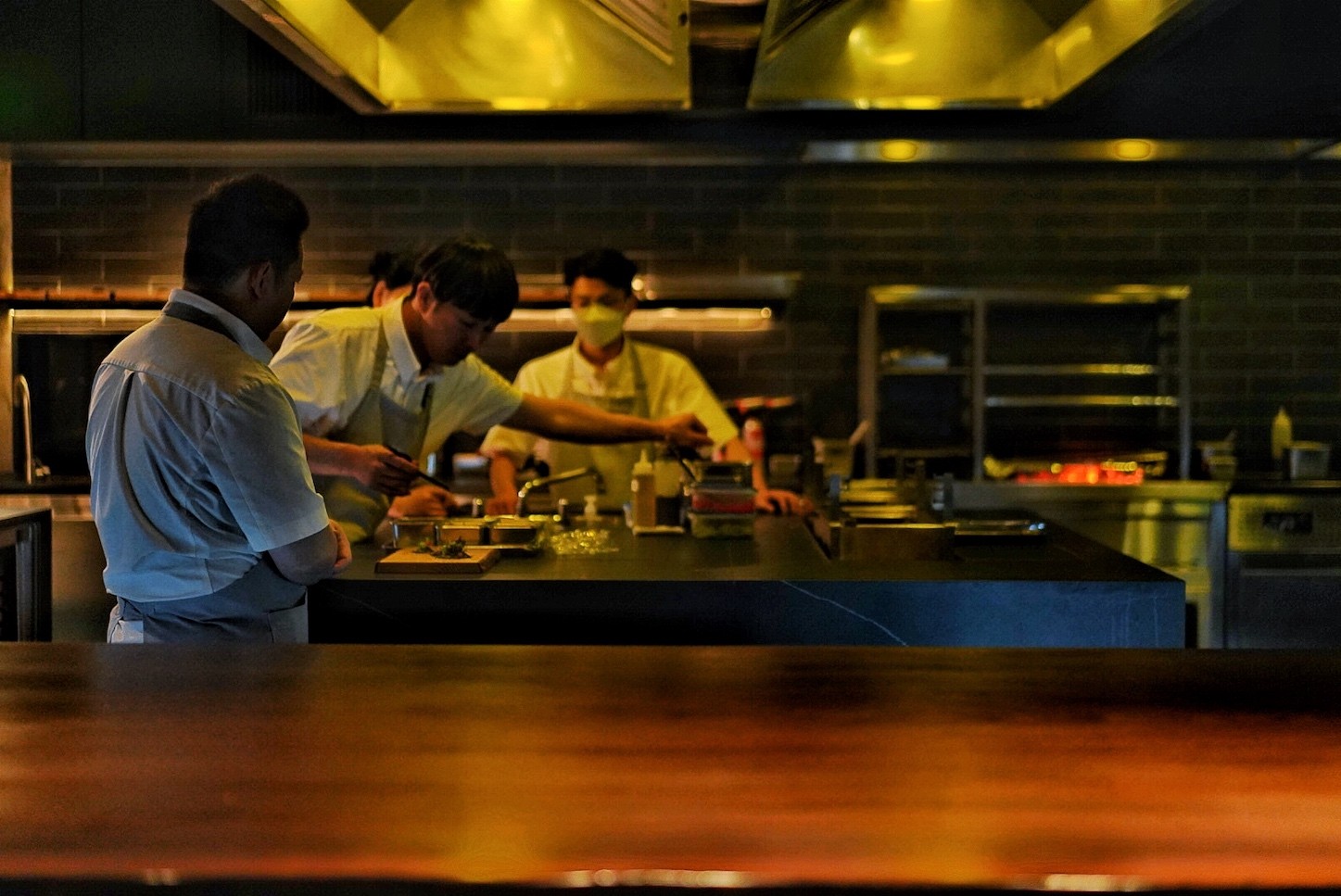
Image by Sophie Steiner/That's
Mirroring said kitchen, the back wall is a customized sake fridge that flaunts many of the Narisawa-only labels, along with a lineup of Dom Perignon (as Chef Narisawa is – no big deal – the brand’s world ambassador).
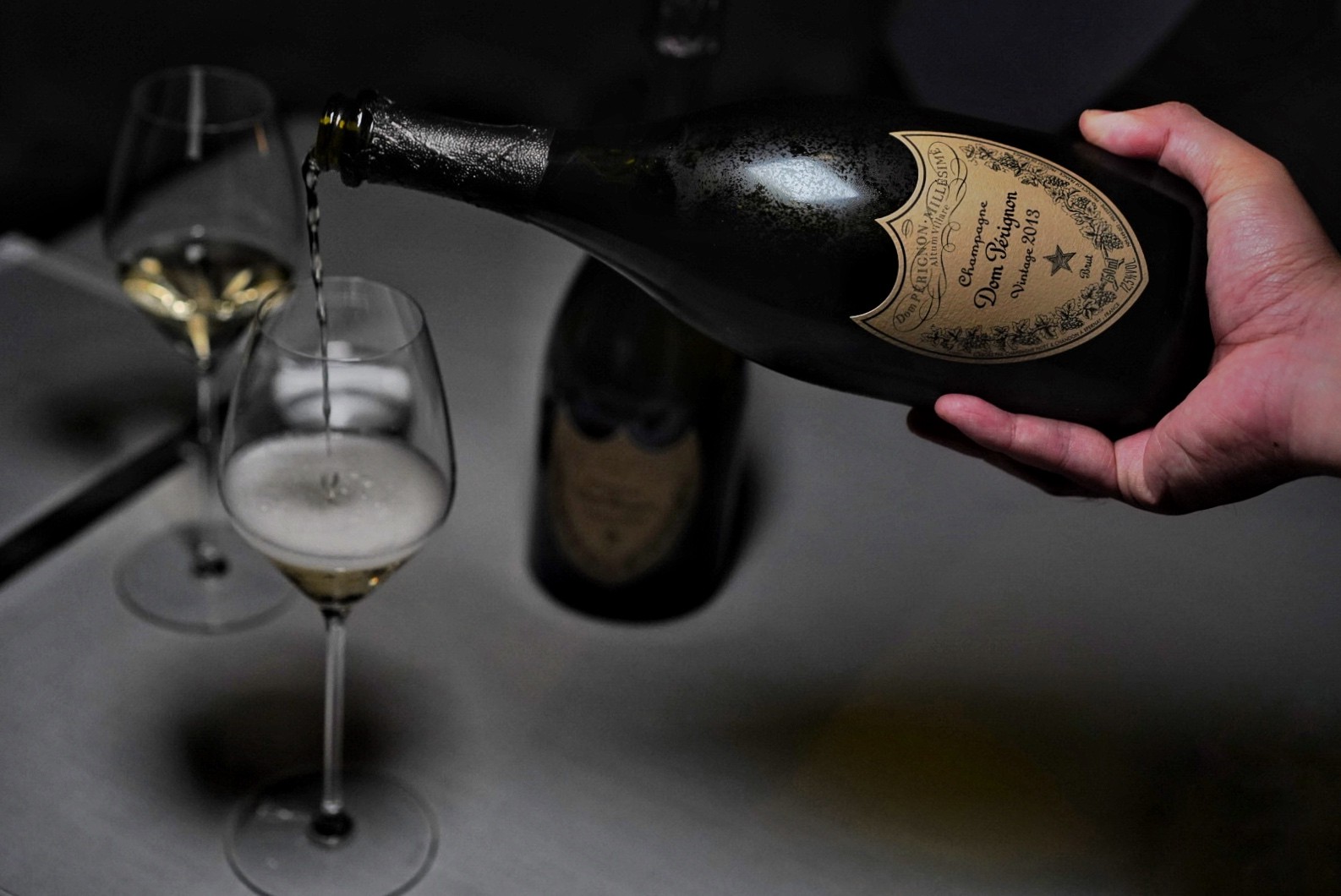
Image by Sophie Steiner/That's
And Chef Narisawa truly has his hand in every detail, extending far beyond ingredient curation, recipe design and kitchen setup; he is involved in even the most minute of details – the linen on the table, the charcoal grill dimensions, the branding of the cutlery.
It is because of this that the venue aligns so well with his Tokyo outpost, similarly outfitted in varying onyx hues, with customized Nishijin fabric-lined chairs – a traditional style of artisanal textile produced in Kyoto.
It’s sleek, dim and sexy – three necessary components of an ideal date spot.
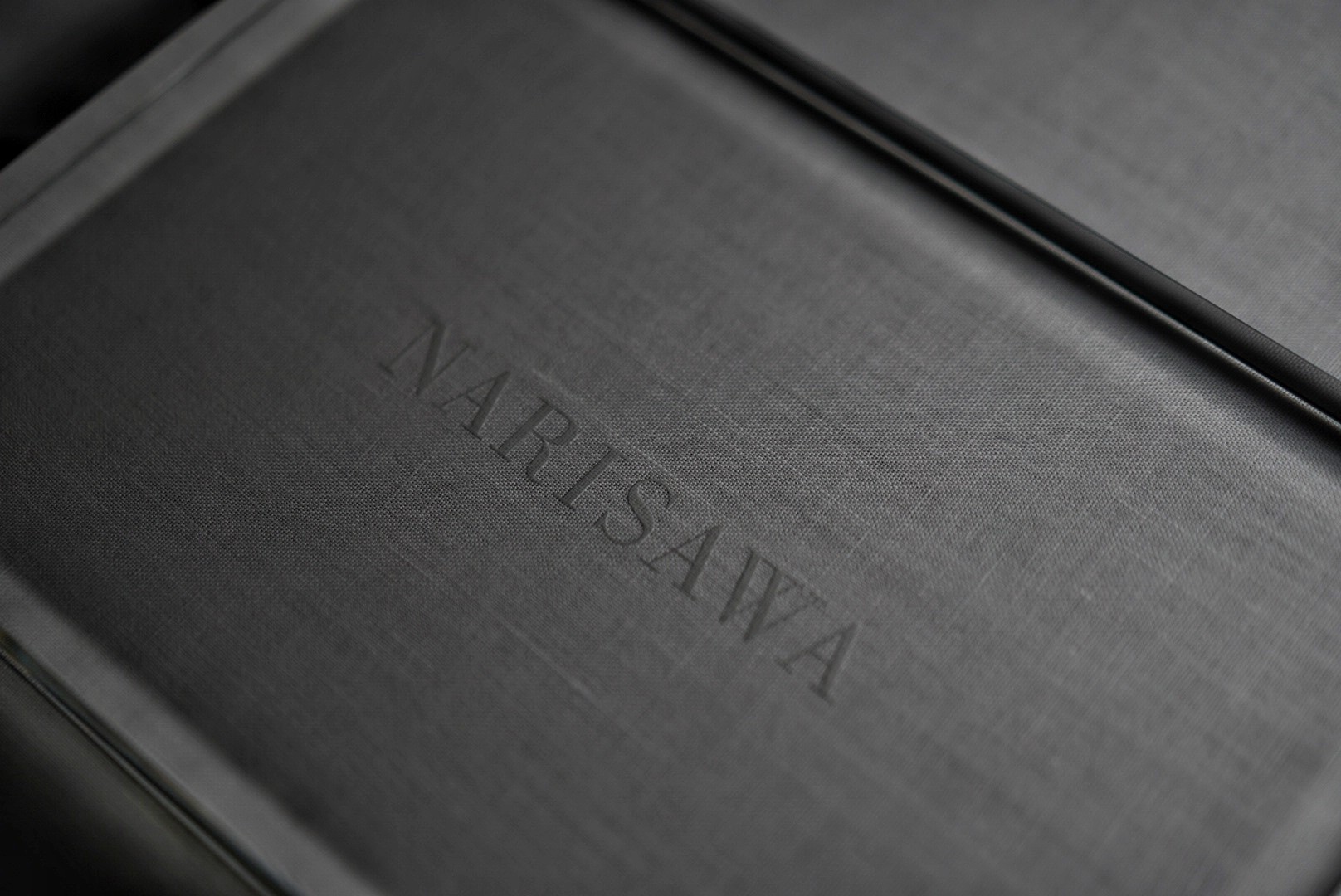
Image by Sophie Steiner/That's
Yet, almost sterile in its minimalism, the space is best described as the oxymoronic “intensely Zen” (if there is such a thing).
Borderline industrial, the most unnerving aspect of the operation room-like atmosphere is the sound – or lack thereof.
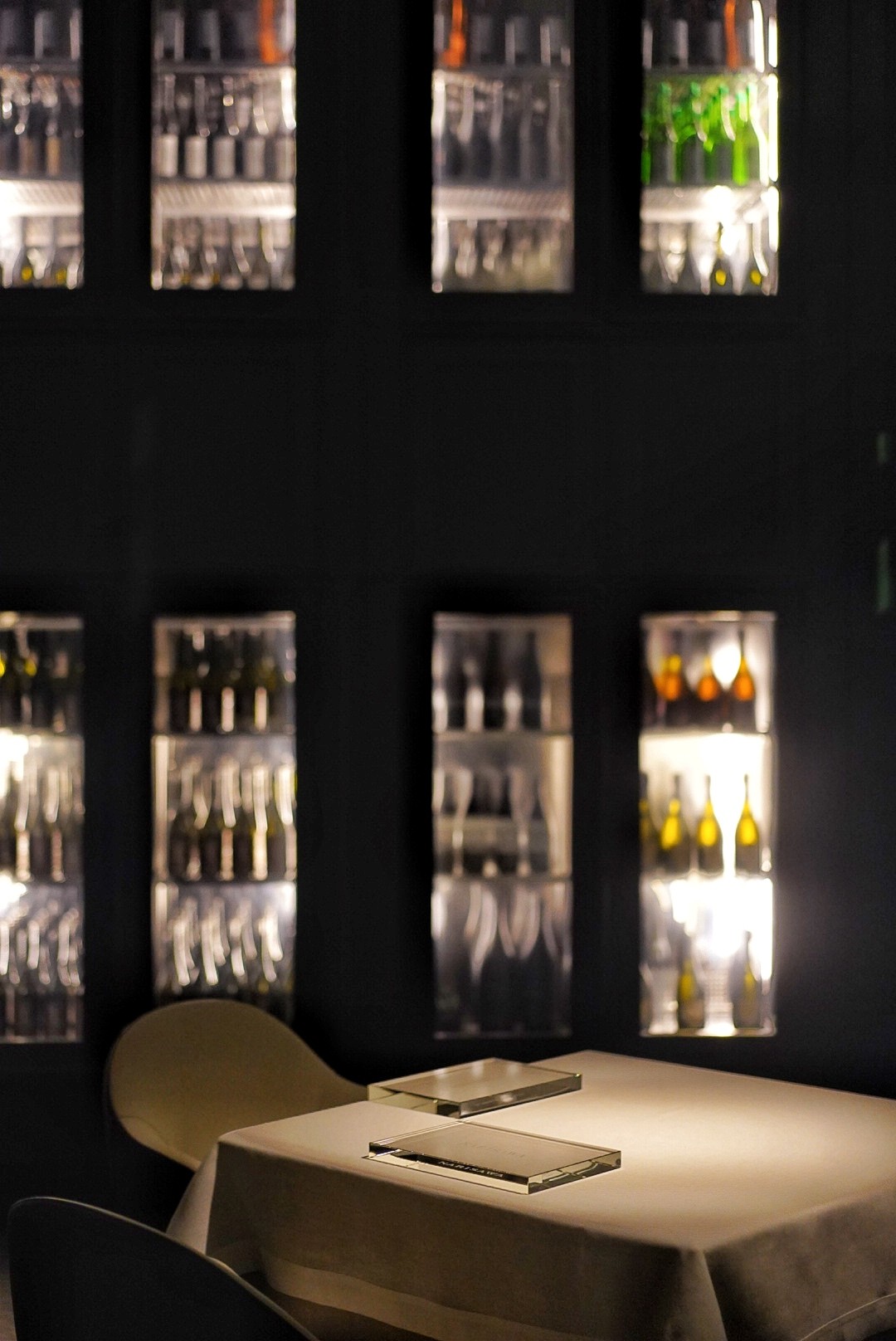
Image by Sophie Steiner/That's
Like a blank palette with which to analyze and interpret each course, Chef Narisawa doesn’t want diners to get lost in the details – or noise – of the unessential, so he removes those factors, stripping away the experience to the bare minimum.
It is in this way that diners can fully immerse themselves into the art on the plate.
Price: RMB1,800-3,000
Who’s Going: Michelin star counters, well to-do locals and expats alike, Chef Narisawa acolytes
Good For: New-age Japanese omakase experiences, exploring Shanghai’s fine dining scene, learning about sustainable food through taste
Narisawa, 7/F, 1000 Trees, 600 Moganshan Lu, by Changhua Lu, 大洋晶典7楼, 莫干山路600号, 近昌化路.
Read more Shanghai Restaurant Reviews.
[Cover image by Sophie Steiner/That's]
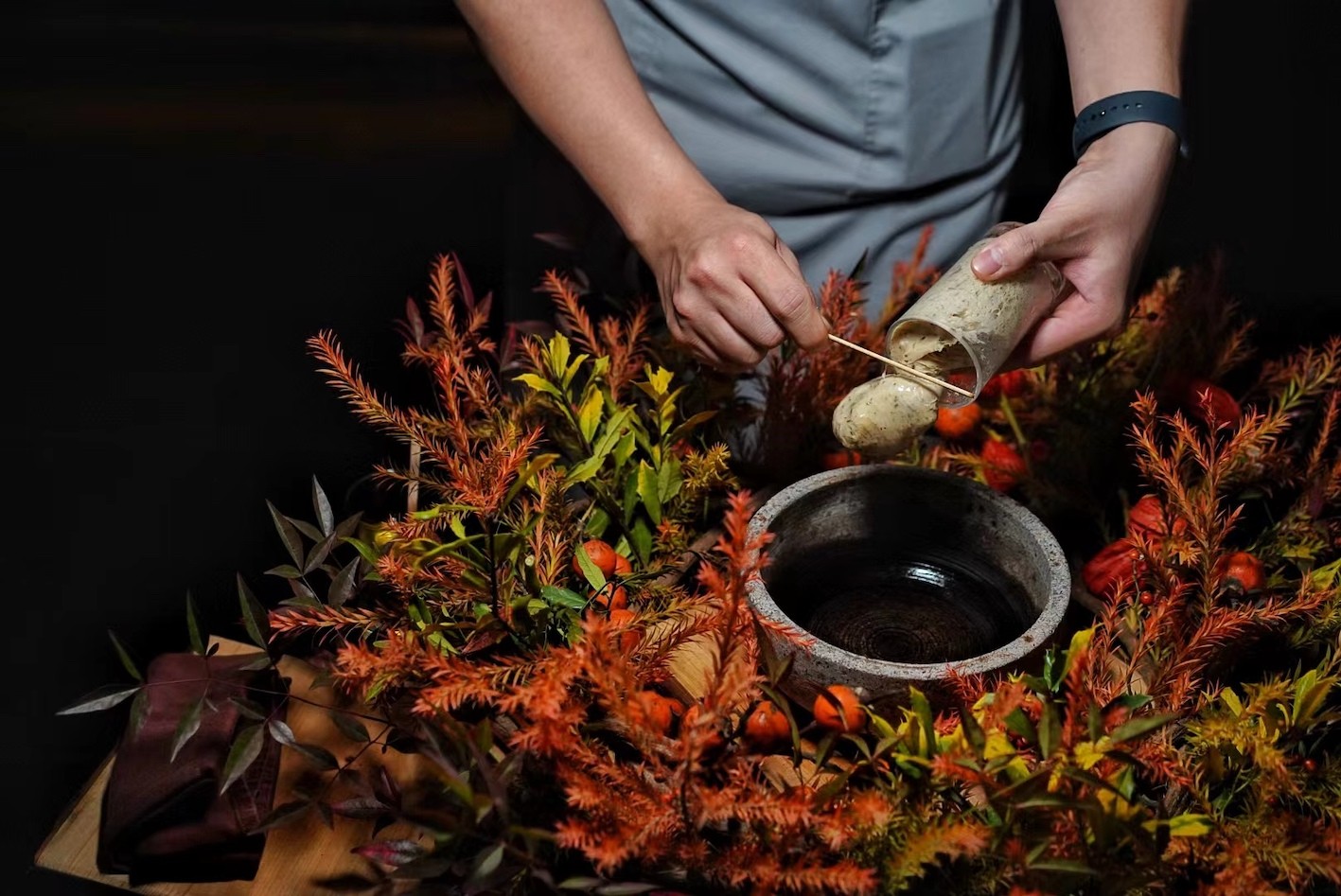



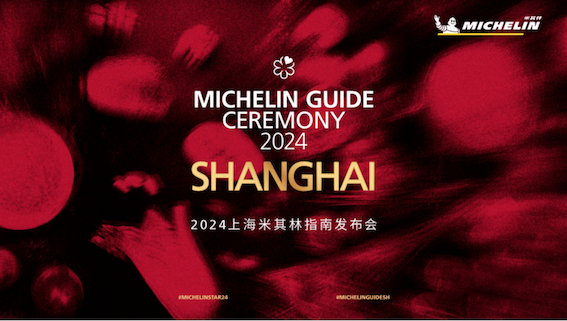
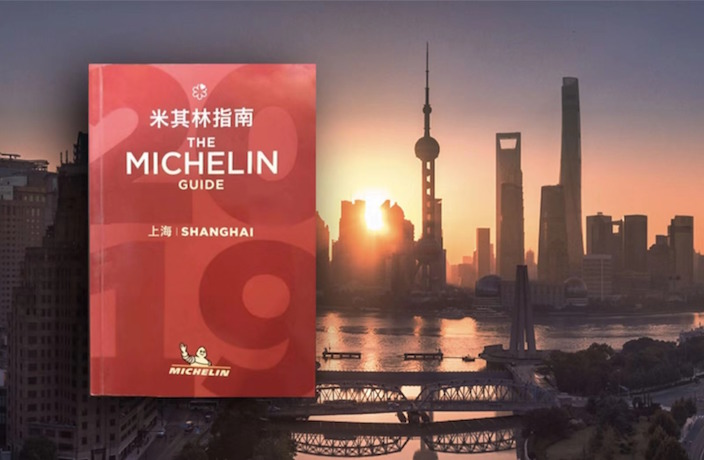















0 User Comments